September 28th
Parque das Nacões
Since yesterday, I am back in Lisbon, and it goes on without Barbara, she plans to come to the Algarve. First, there is big cleaning again, because I did not leave amica so neat. The boat is dusty; I have to do laundry, and outside there is a green edge. The next step will be to fill up the Inventories and bunker petrol, so fill up all the jerry cans. For the trip around the Cabo de São Vicente in the south I probably need more than one full tank (12 l), after all there are a good 60 nautical miles to cover from Sines to the anchorage at Sagres. That created despite the days becoming shorter now in a day trip. I have 12 hours from sunrise to sunset. Stopovers before Sines are Oeiras and Sesimbra, if there is room for a small boat, otherwise Setubal.
October 7th
Setubal
Now I landed here in Setubal, for me in Sesimbra (requested by mail and phone) was no place. The simple alternative Troia wanted to tolerate me also only one night. Also this short stay was enough, here it’s all Resort (investor language for private): the port, the supermarket, and the whole area, all with corresponding prices. I cannot afford to bunker in the supermarket Meo. In addition, the cockroaches in the shower run one over the way. So, I drove the half hour over to Setubal, a normal city with a normal port and a Pingo Doce to bunker. Fuel station right at the port.
Here arrived at yesterday, it goes on Sunday straight to Sines tomorrow, because they want to give me here also only two days. I could then ask again, but that is too annoying for planning. Probably the next stable north wind period arrives in a week. Well the next 5 days there is more or less calm, this should be enough for a trip under motor to Lagos. Unfortunately, it is not possible to moor in Sines, the harbour is closed, because of considerable defects of the pontoons and until the investors have stirred, years can pass. It is allow anchoring in the harbour basin. At Sagres there is also an anchoring possibility and according to the forecasts there is no or weak wind from the north this night. That fits very well and until then on this Tuesday the wind freshens up around noon again slightly from the east; already I have brought the 15 nautical miles to Lagos behind me.
Now a few beautiful impressions:
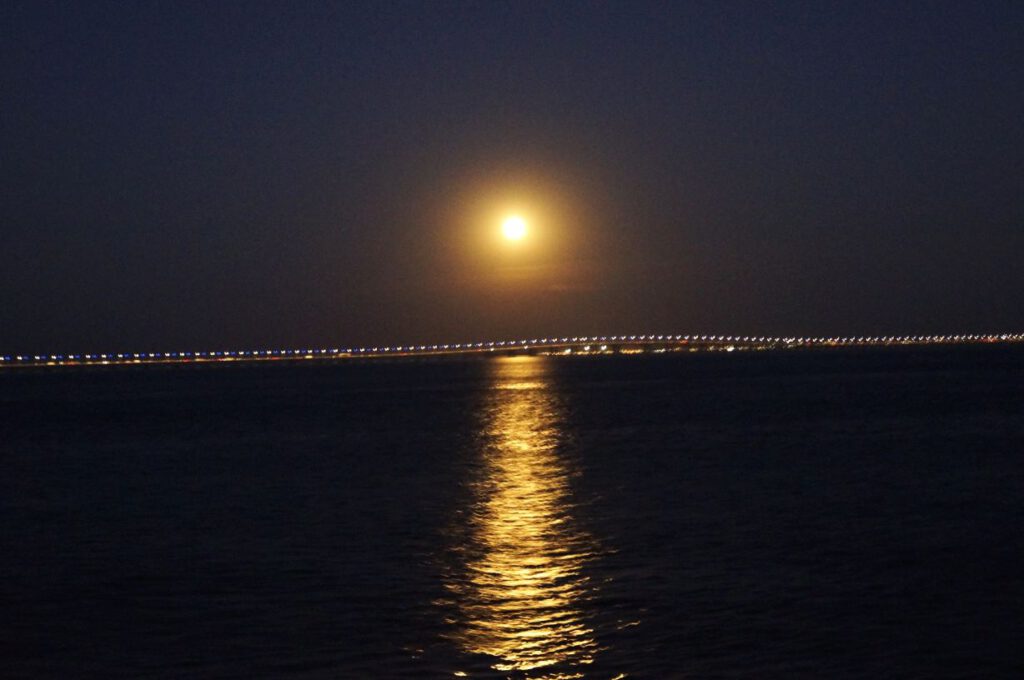
Moon over the Tejo
On the Tejo passing Lisbon I could see how beautiful this town looks like. Unfortunately, I did not visit the inner city of Lisbon due to the high temperatures. However, I think from the outside, every city look more beautiful anyway.
The Funchal, an older cruiser with style
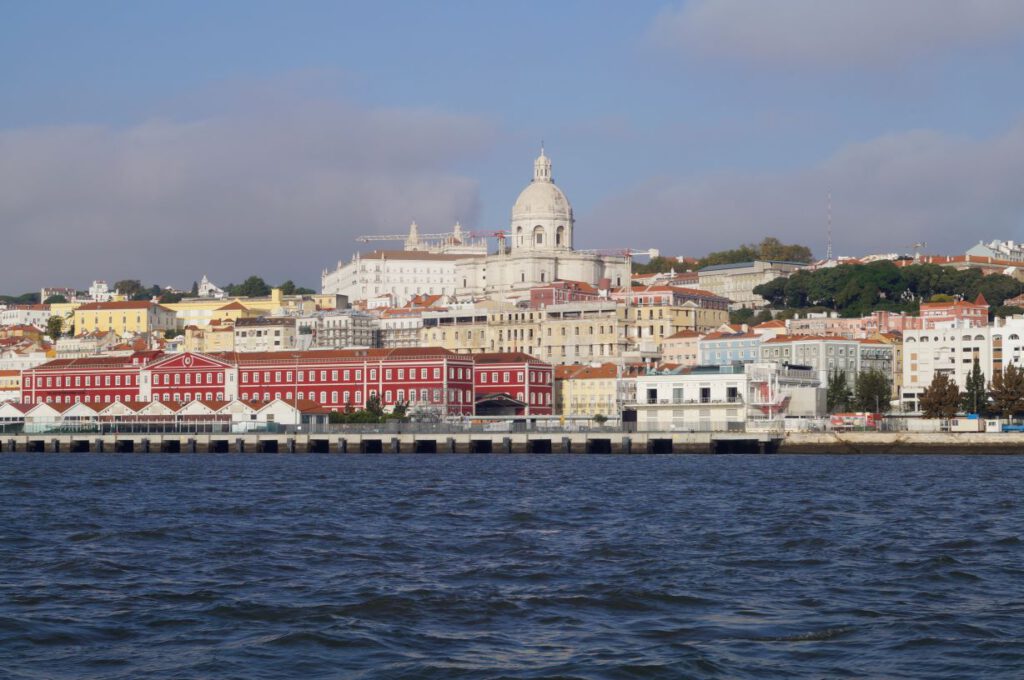
Lisbon old town
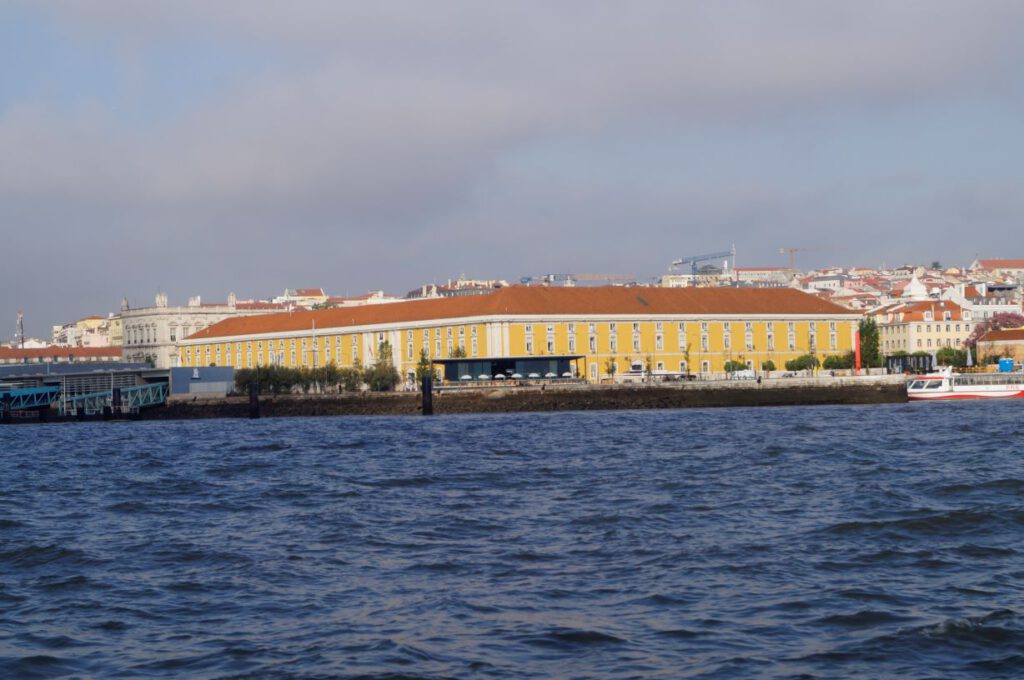
There are enough palaces
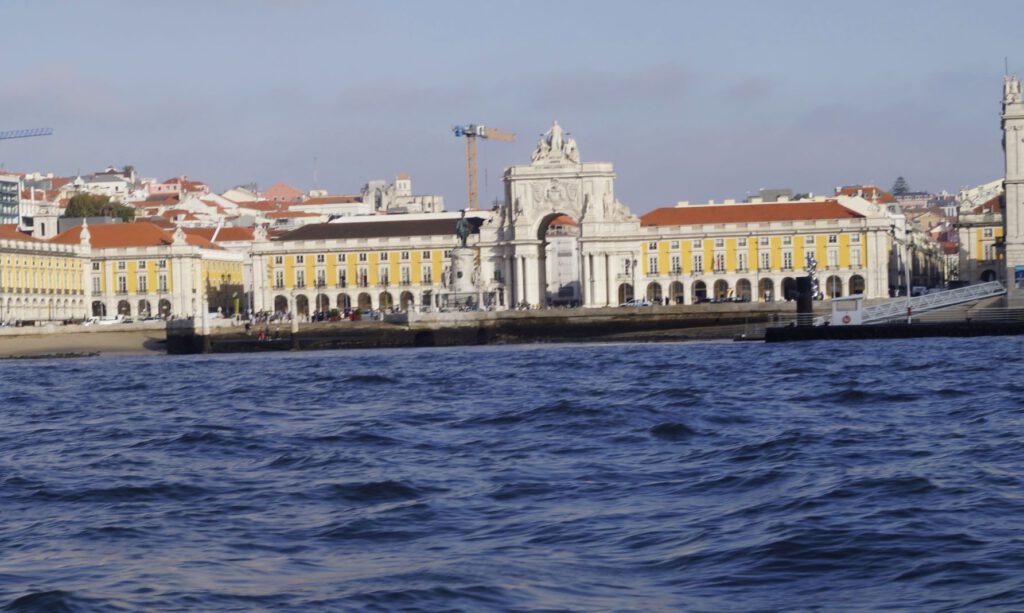
And another one, but I was too lazy to pick out the names
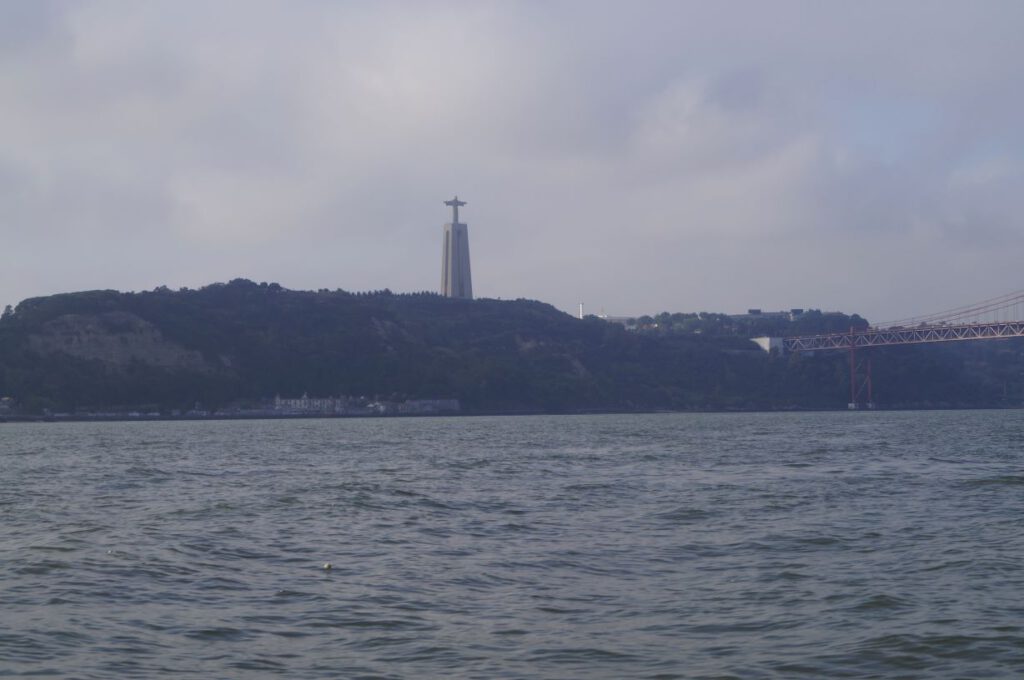
A Christo Rei they have of course also
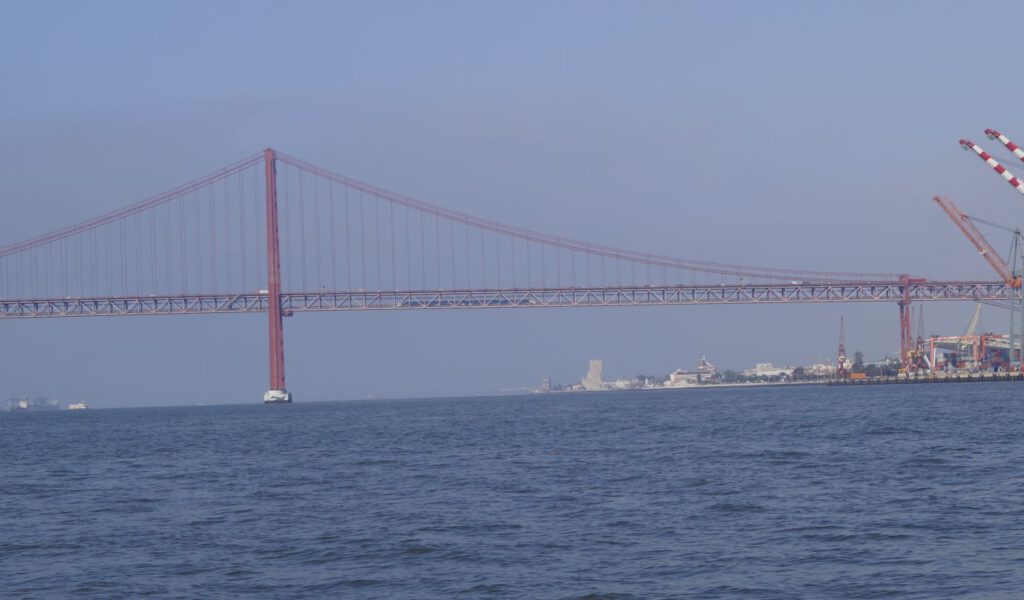
The Ponte 25 do Abril with train in the lower level
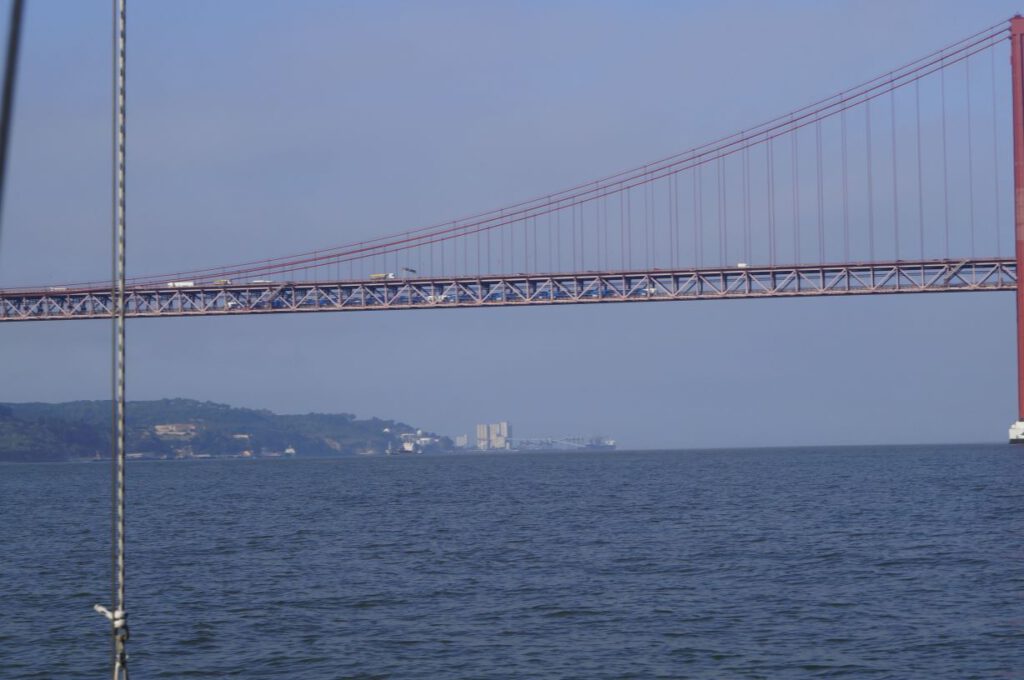
Here even clearer to see
No, not the bridge again. Here you have to listen more than look. What you hear is traffic, not a train. This is not quiet asphalt.
Now let’s move on to Oeiras, this place pleasantly surprised me.
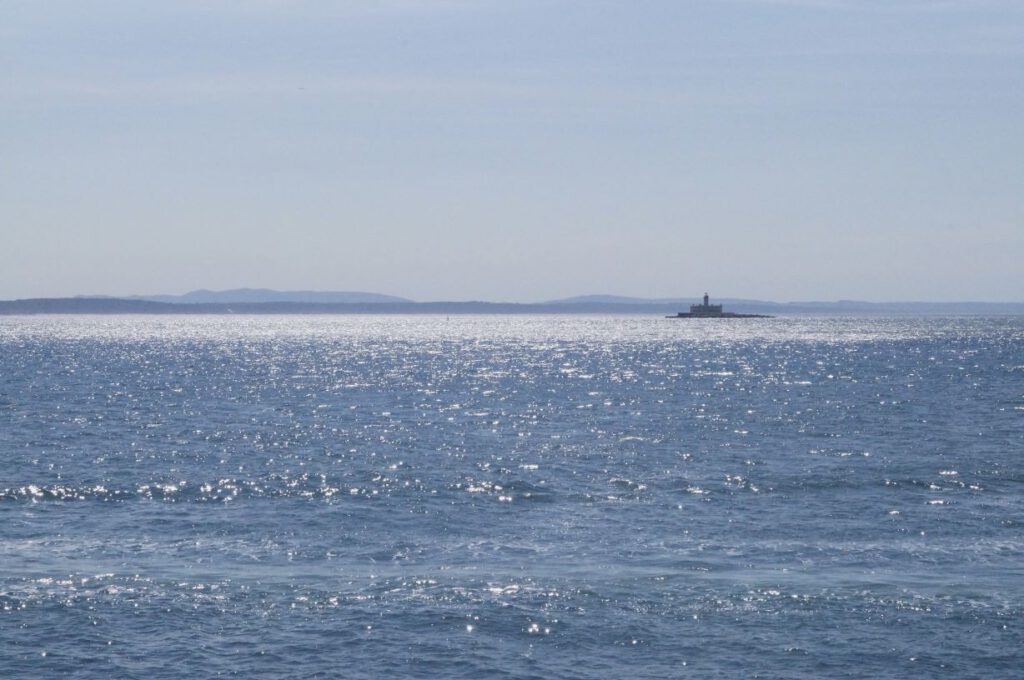
The view over the Tejo is unique. Behind you can see the coast to the south.
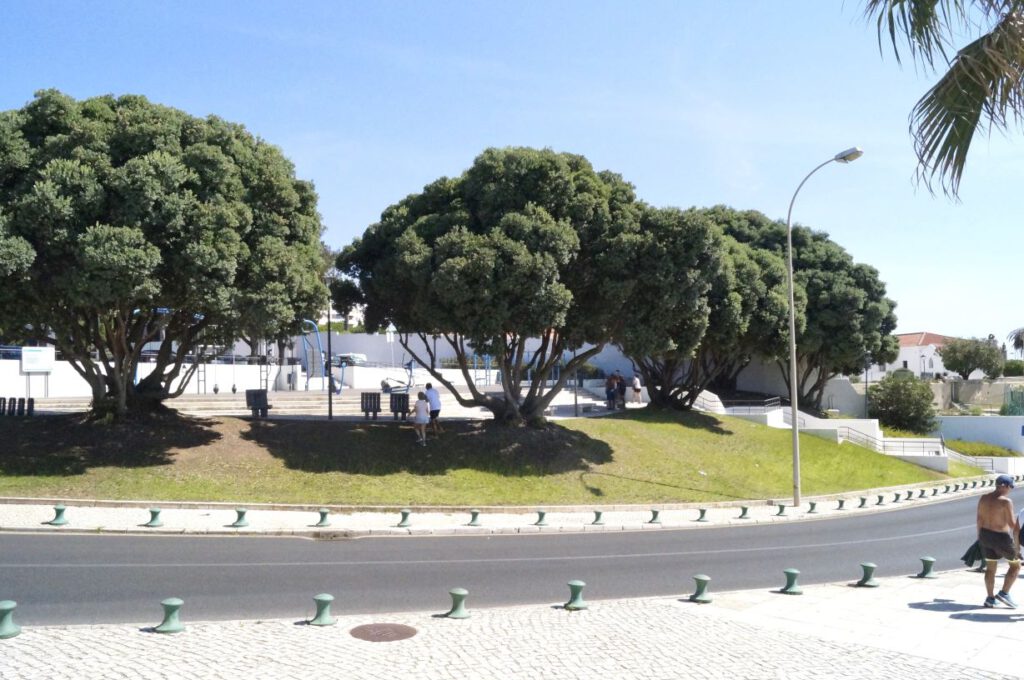
Oeiras is very green, which is not a given in Portugal.
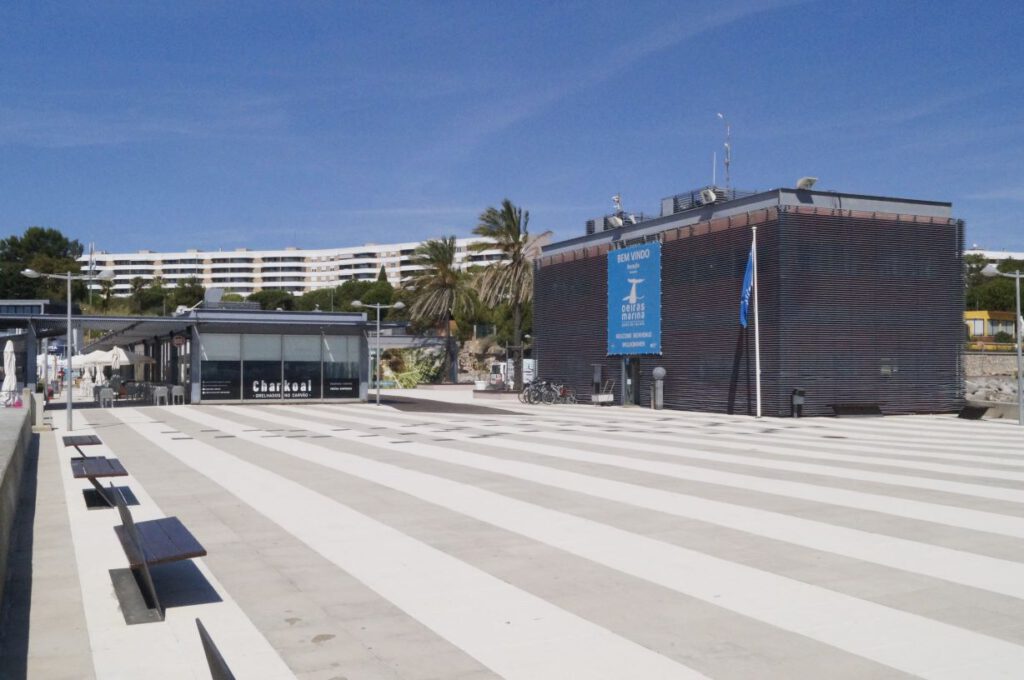
Well, the reception of the marina is very dominant and cannot be missed.
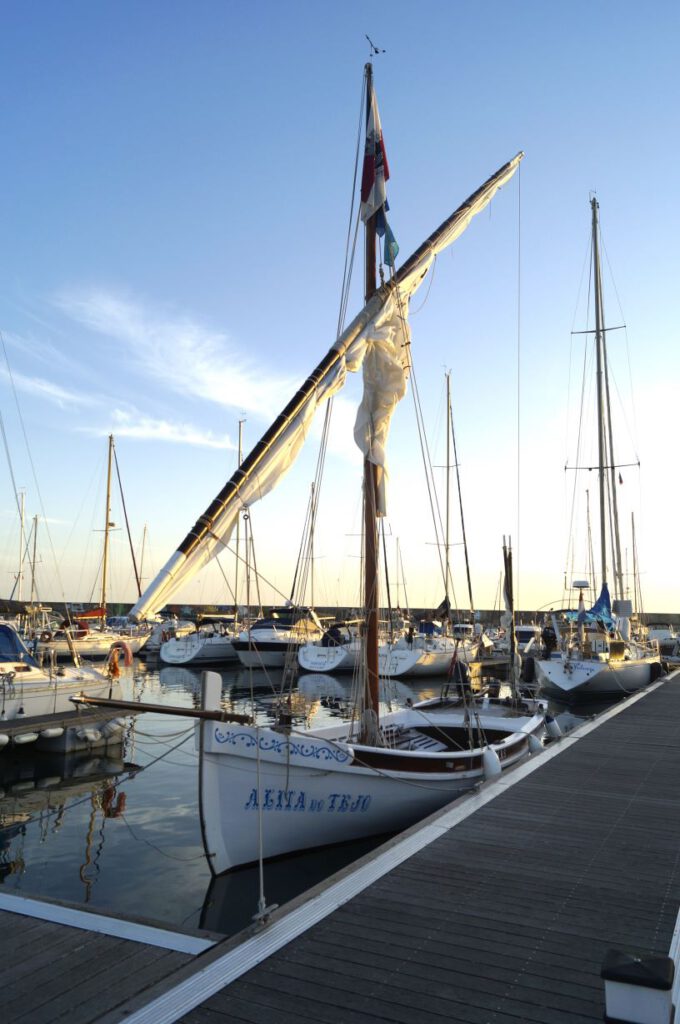
But there are interesting traditional boats in the harbour, and you get a free bread roll every morning.
And after 3 days I went on under motor, in the long run that is boring, mostly on sandy coasts. So I was always looking forward to every cape and cliffs.
Cabo Espichel from the north
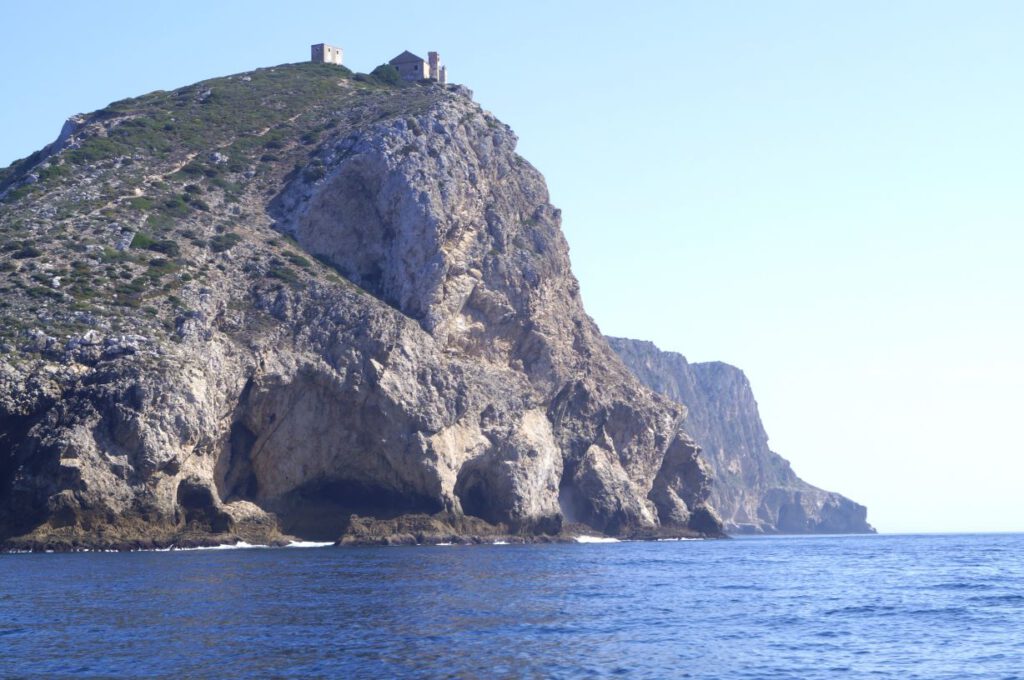
Cabo Espichel, exactly at the tip and as always very close because of the Orcas.
Cabo Espichel from the south
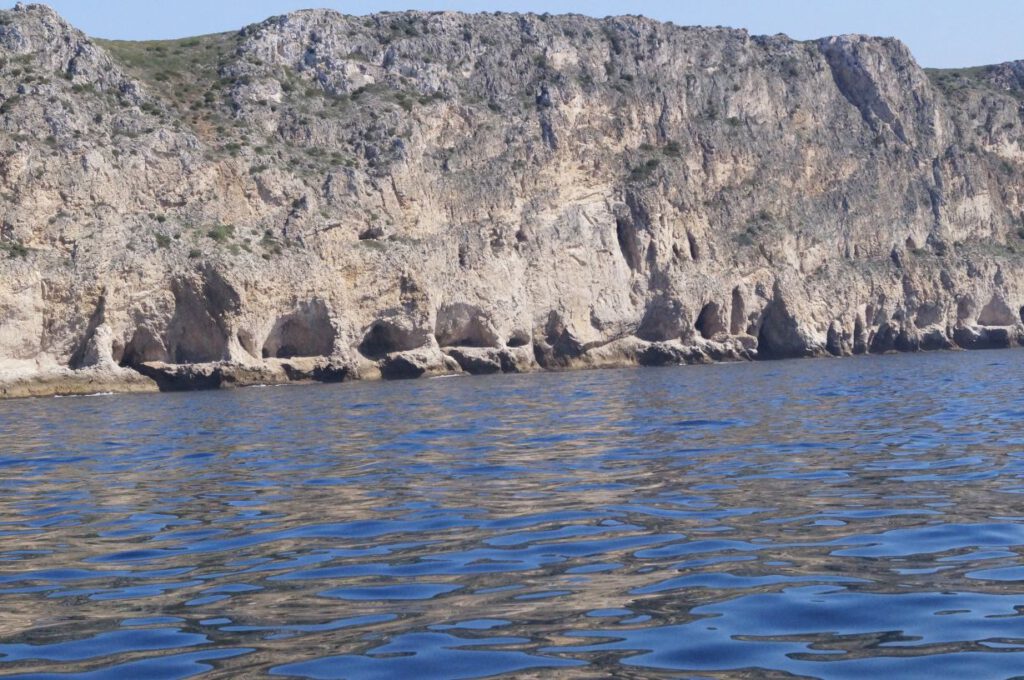
The cliff after the cape had many washed out caves. Probably here runs in the winter a strong swell.
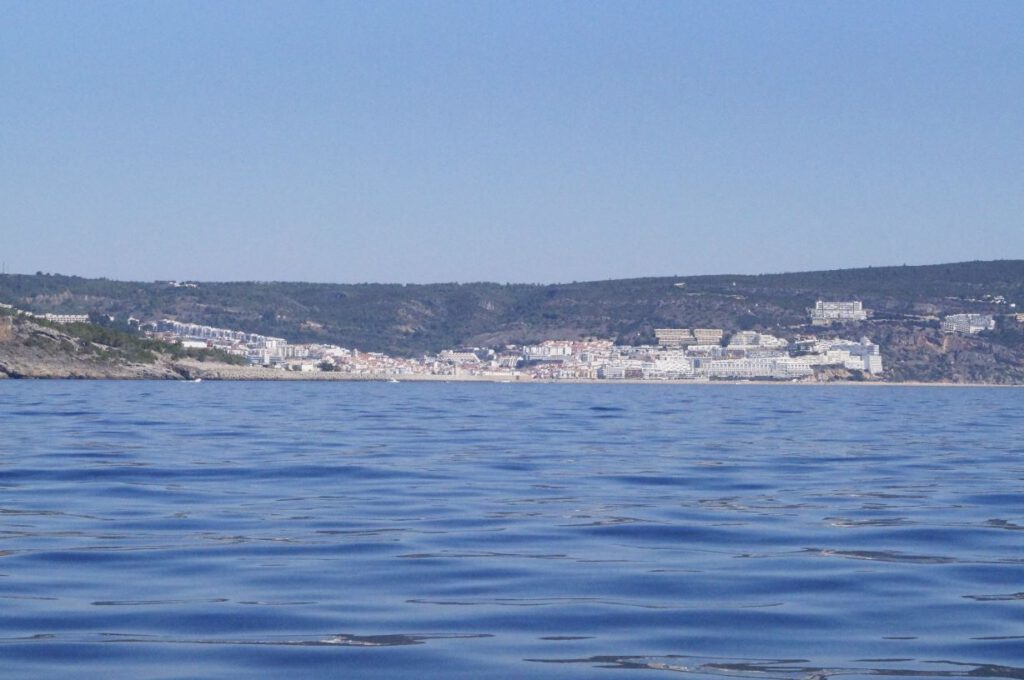
Sesimbra, where I found no berth, really a pity.
The steep coast between Sesimbra and Setubal, up to 380 m high. Here I drove on 60 to 80 m water depth. Oh dear, the Orcas!
From Troia I have no pictures. Setubal, Stubal as it is pronounced, has its special charms. Unfortunately, it was again too hot to make bigger excursions. So I mainly looked around in the harbour area.
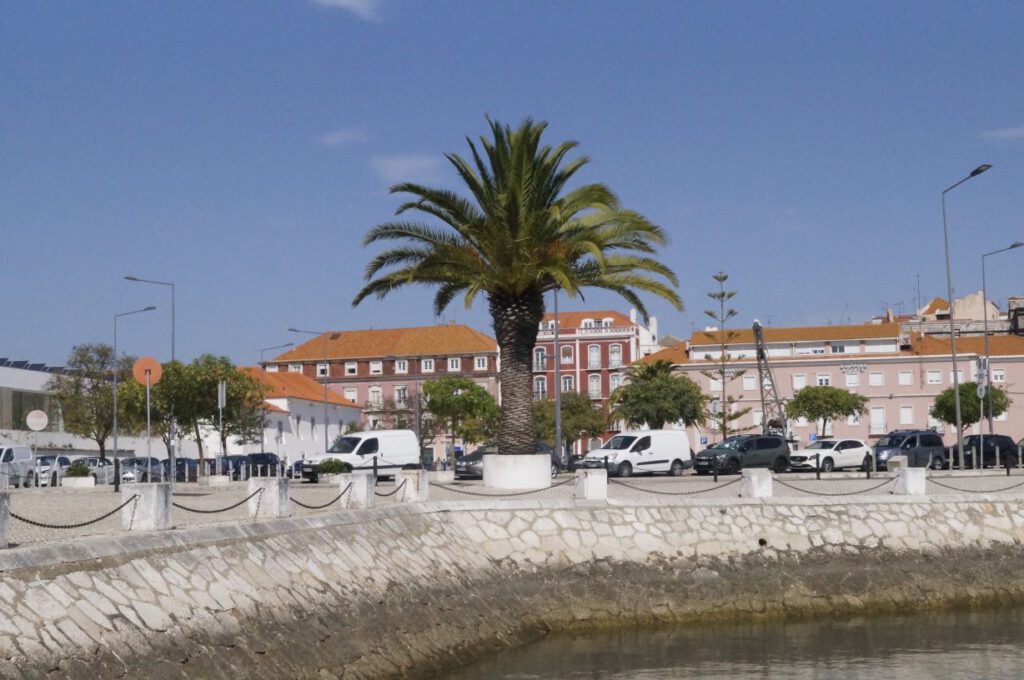
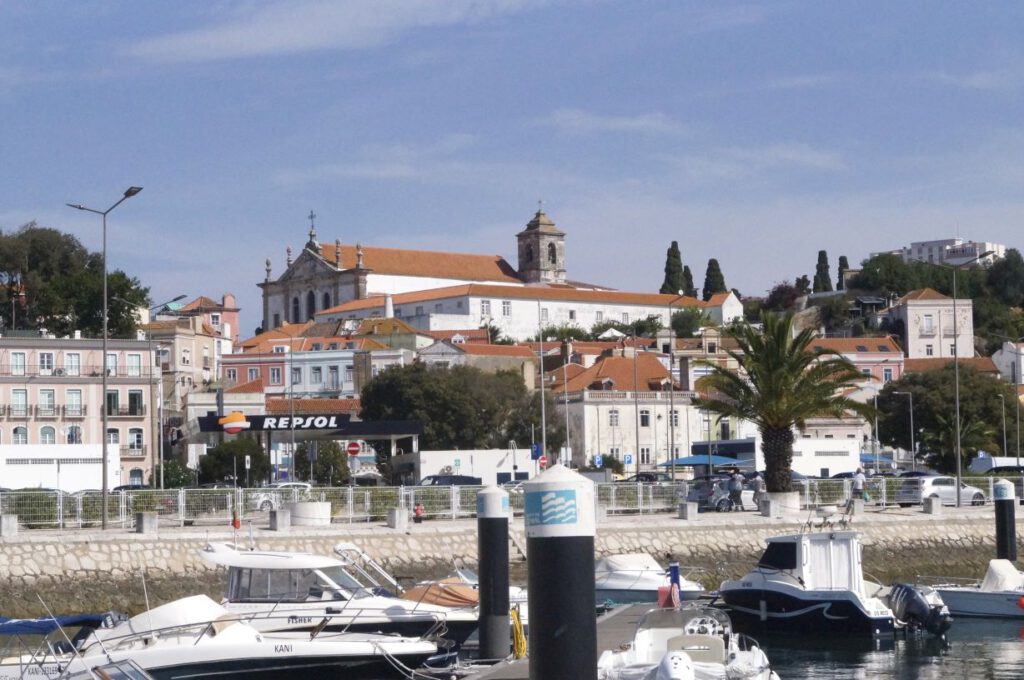
The harbour panorama
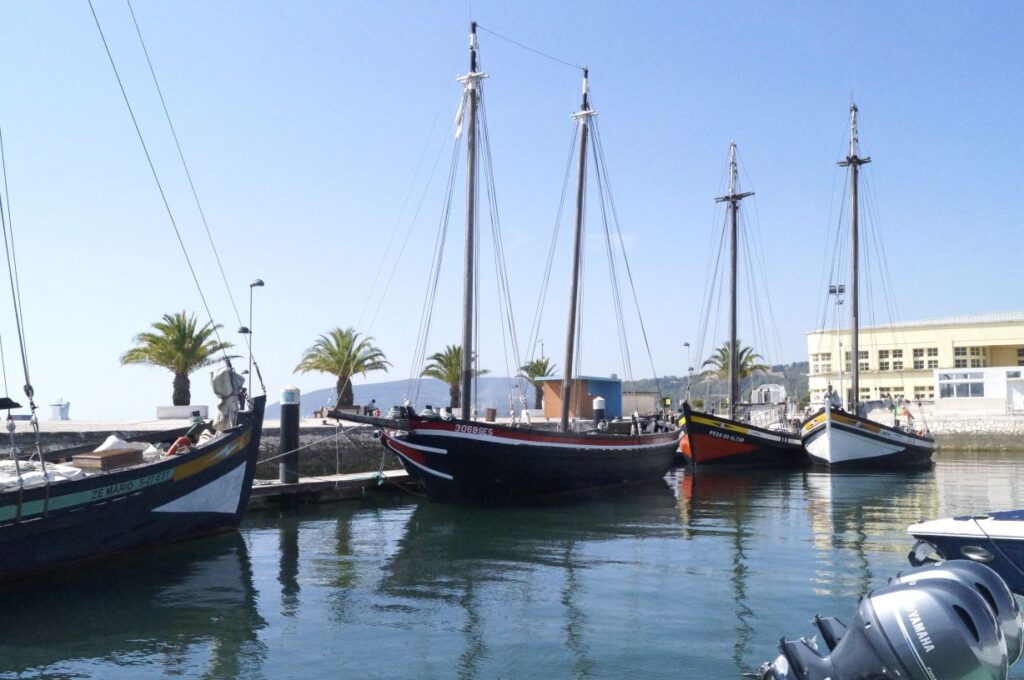
Traditional sailing ships in Setubal
12th of October
Lagos
I’ve been here for two days and can’t say I’ve recovered from the two strenuous sailing trips. The entire route is nearly 120 miles long and included bumpy stops in Sines and Sagres. The entire journey under motor took over 50 hours, including the restless nights. I steered by hand, with only a few breaks from the tiller pilot. Since I couldn’t charge the battery on the go, I used energy very sparingly. This puts a strain on my physical condition. The port of Sines is closed, and you must anchor in the harbour basin. Unfortunately, there was a slight swell in the harbour during the night and in the second half of the night fishermen came and went. I only slept intermittently. And the north wind in Sagres? The wind was calm or light, but there were also swell in the harbour. It’s not possible to moor here anyway, so that was the second night with little sleep. Then another 3 hours to Lagos in light winds, with increasing winds forecast towards midday. Since I didn’t feel like sailing, I did the rest under motor.
Now I’ll let the pictures speak for themselves:
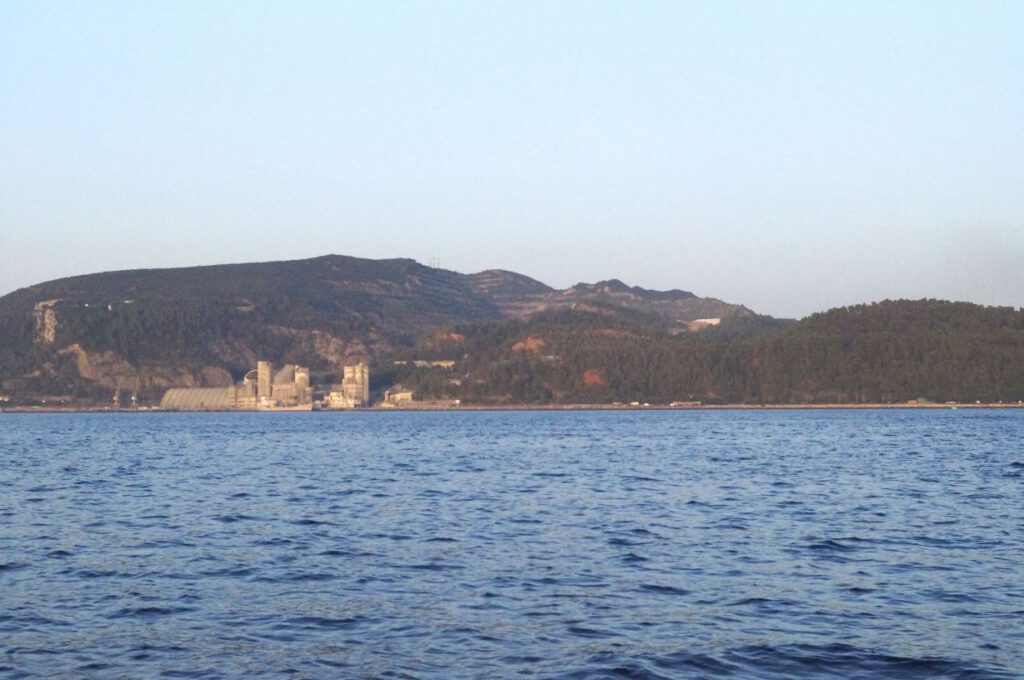
The beautiful hills, which I unfortunately could not reach.
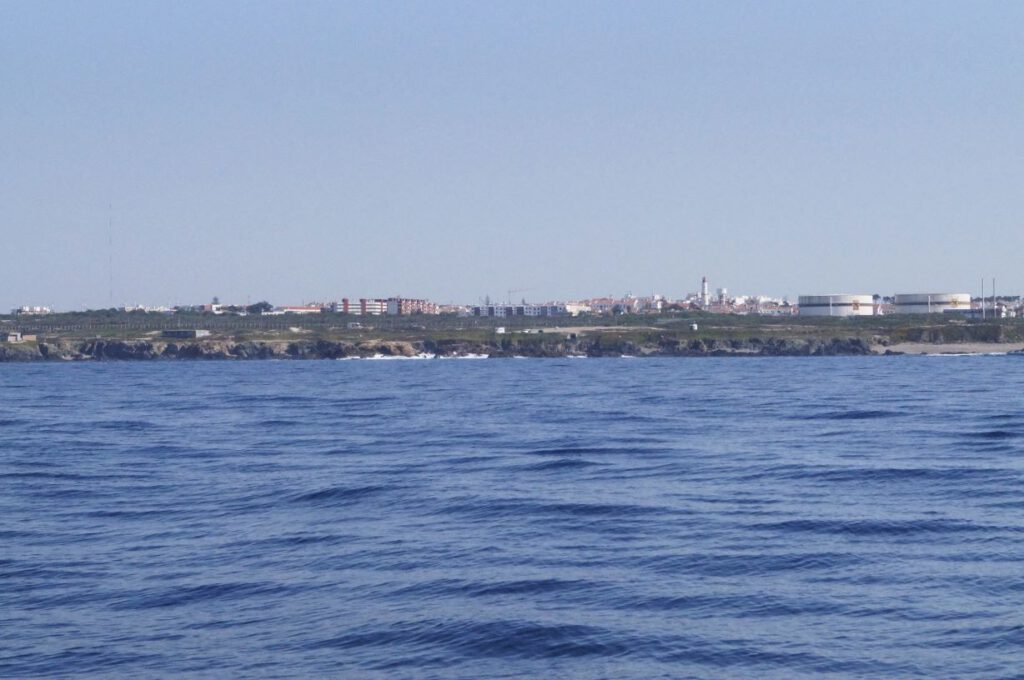
The Cabo de Sines or Cabo de Petrol?
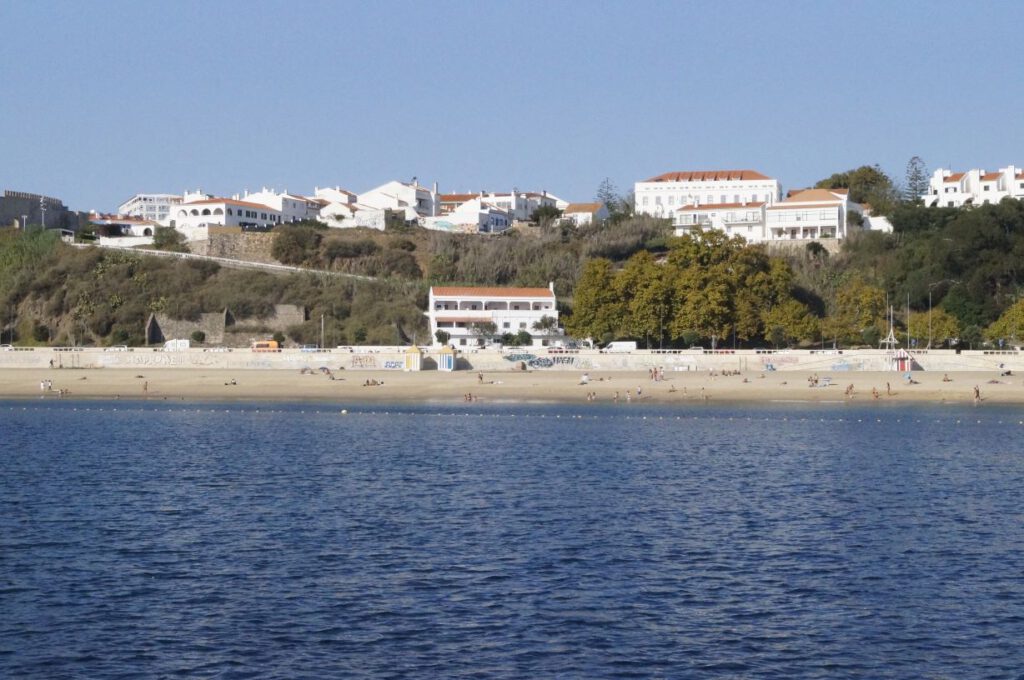
Sines, the more beautiful part
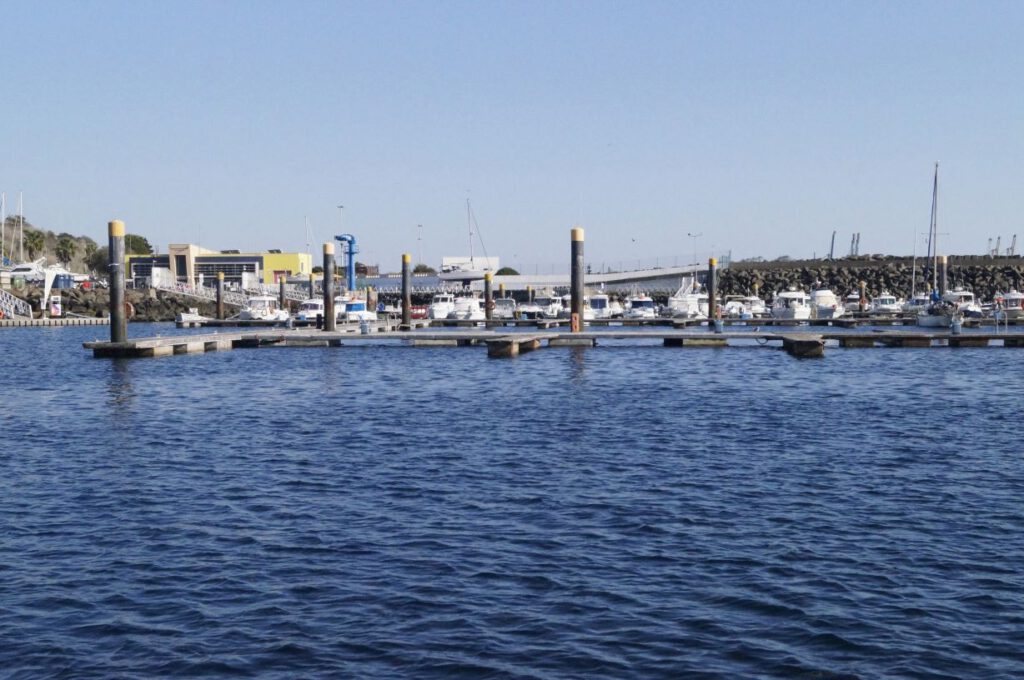
Sines, the broken pontoons with removed cleats
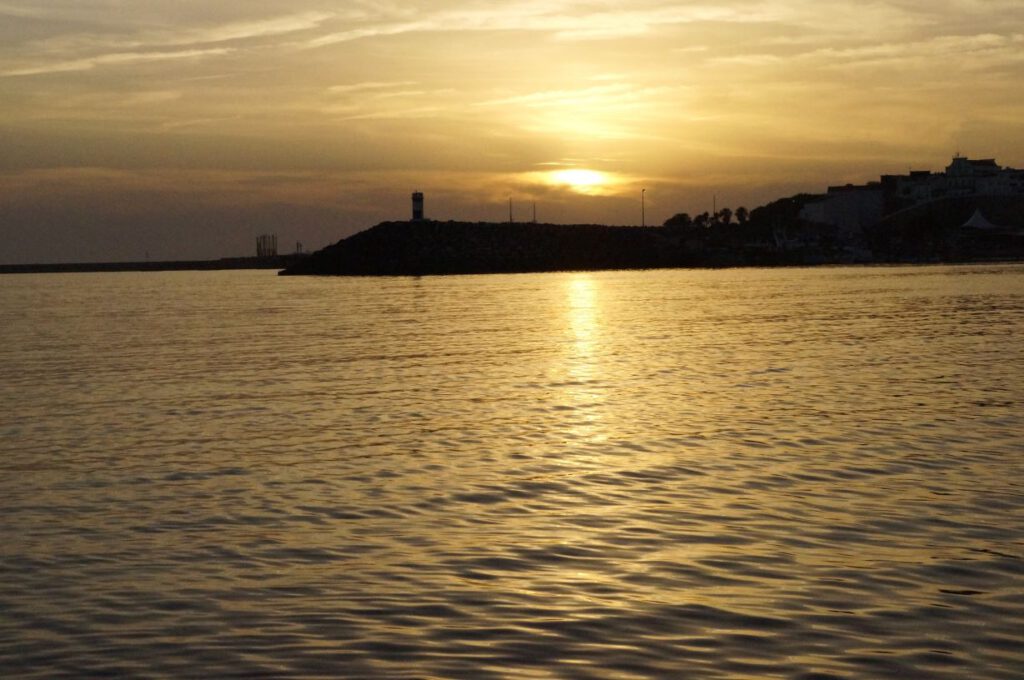
Sines, sunset shortly while diving in
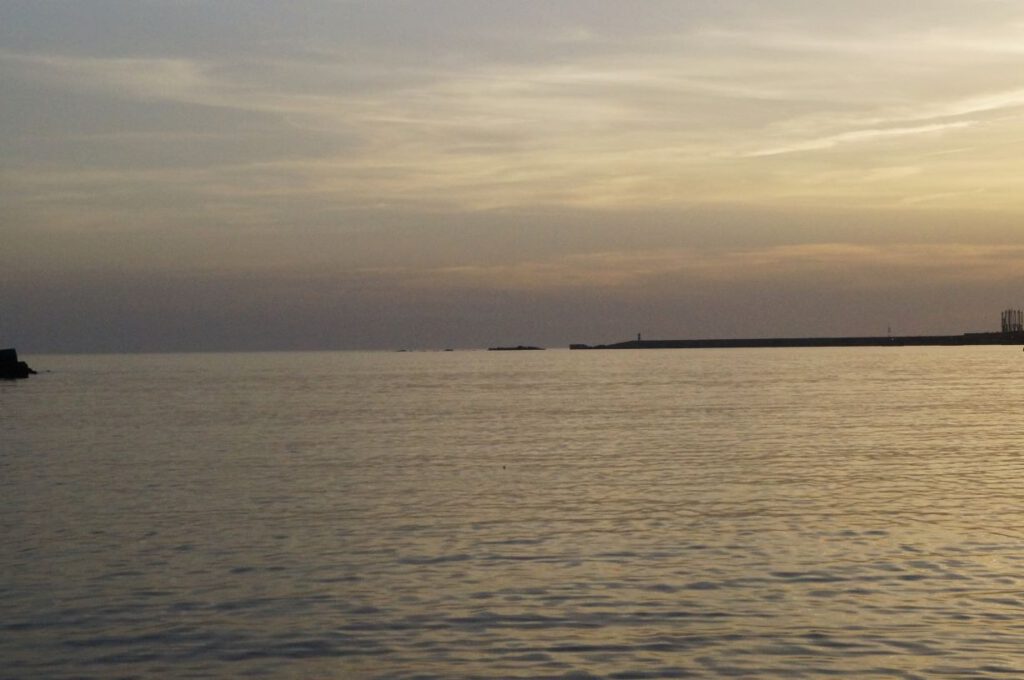
Sines, sunset shortly after. Find out which you like better.
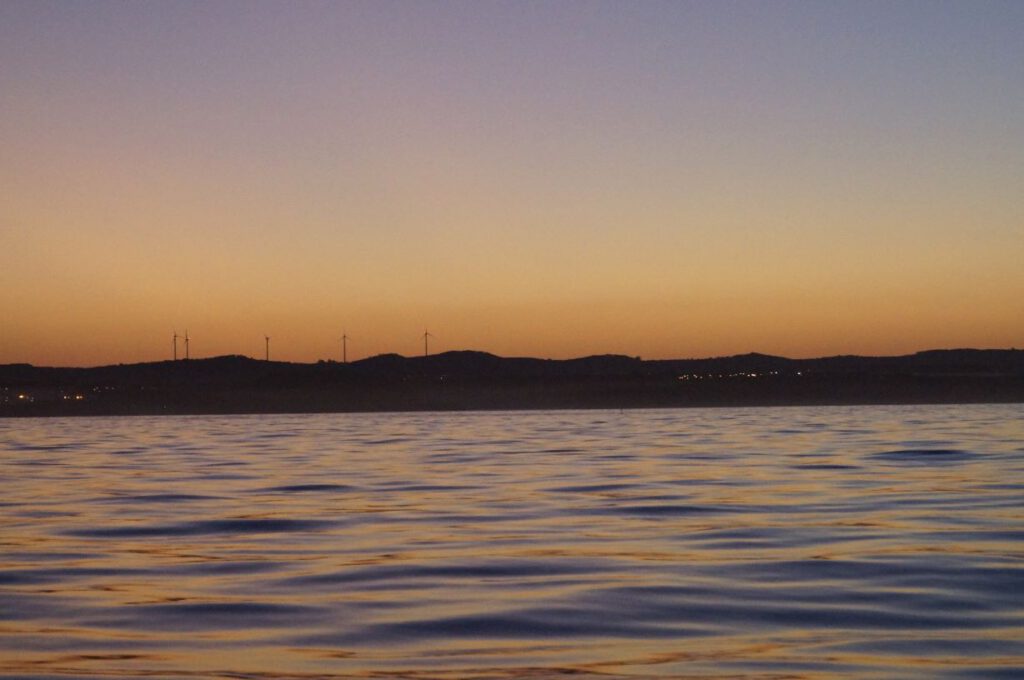
Porto Covo, shortly before sunrise about 7.20 a.m. Already I have been on the road for 1.5 hours.
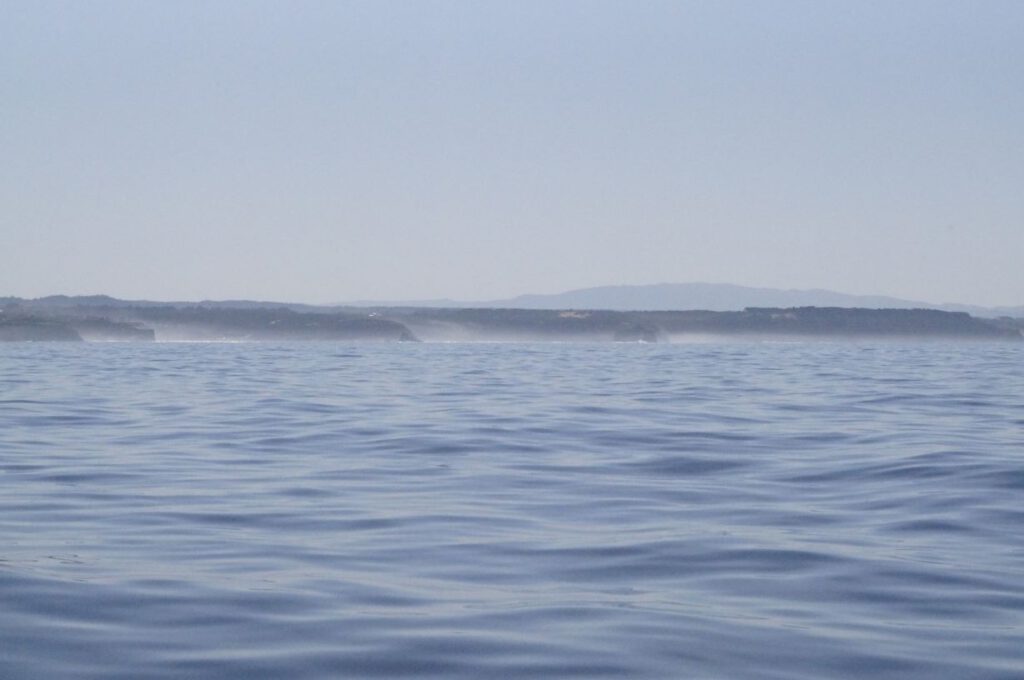
Rocky coast in front of Cabo de São Vicente, in the haze, with the Monchique Mountains behind.
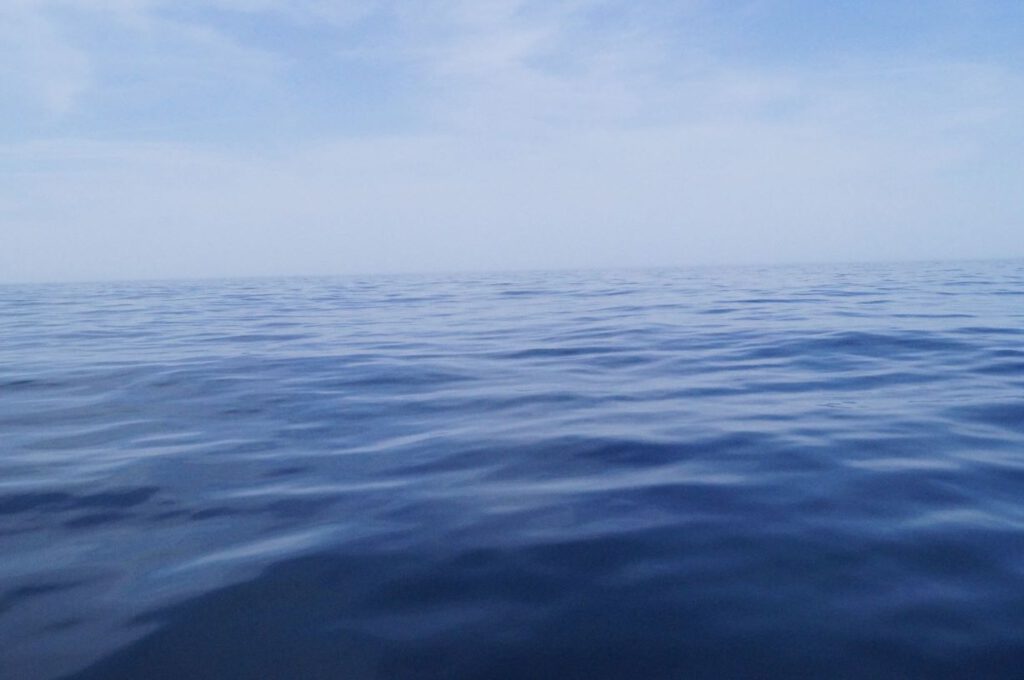
Rocky coast, the calm Atlantic.
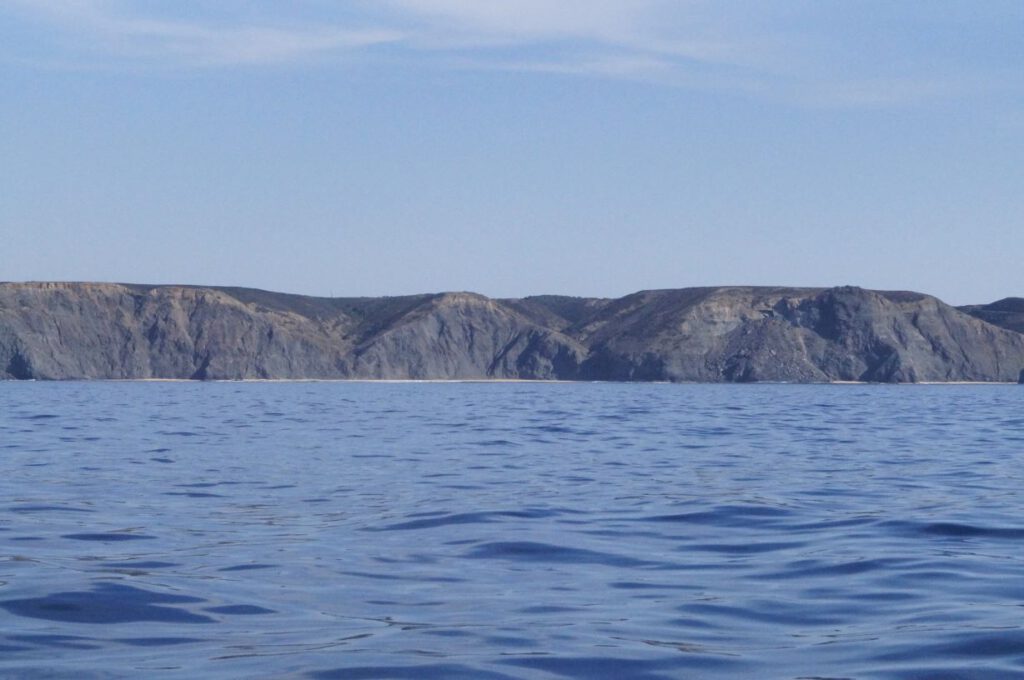
Rocky coast, dark and threatening.
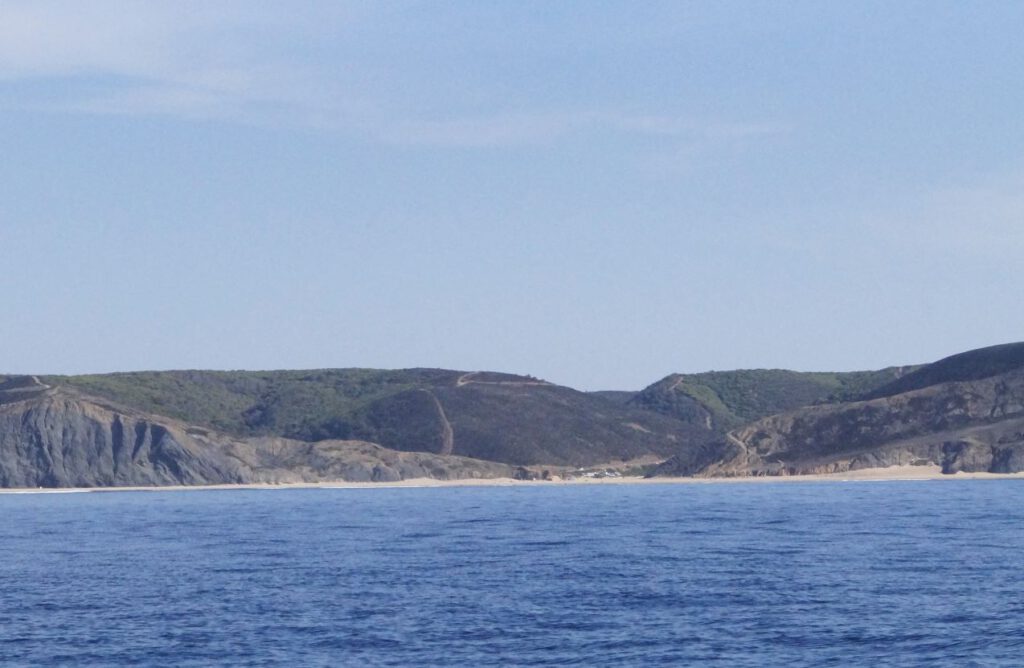
Rocky coast. Gaps with beach and houses. The whole coast was otherwise deserted, no people, no houses, no fishermen and no yachts.
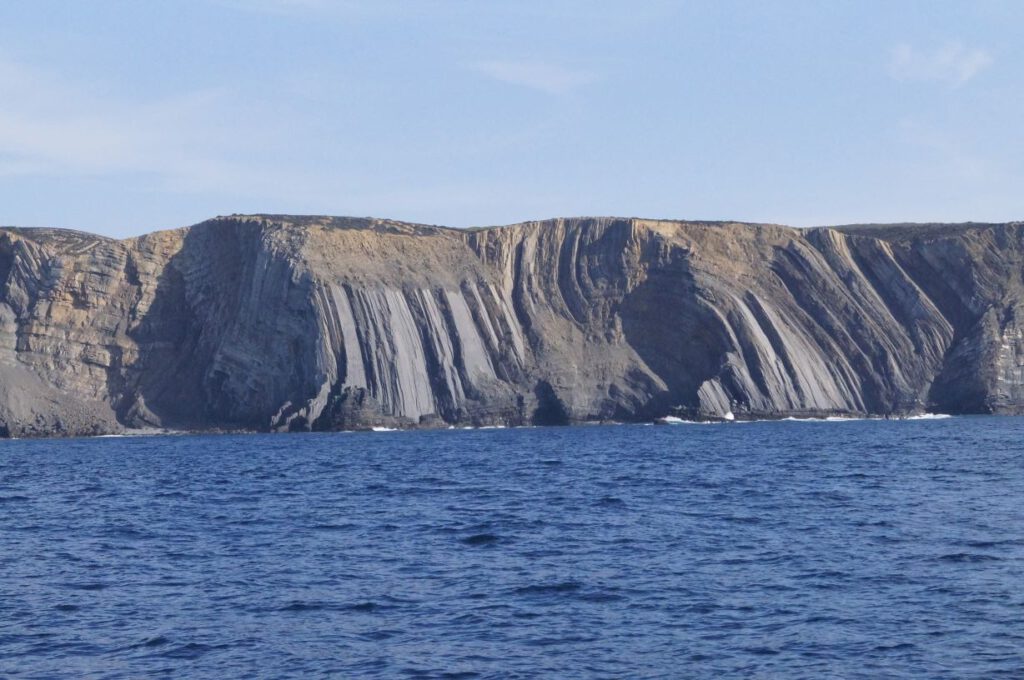
Rocky coast, artfully washed out.
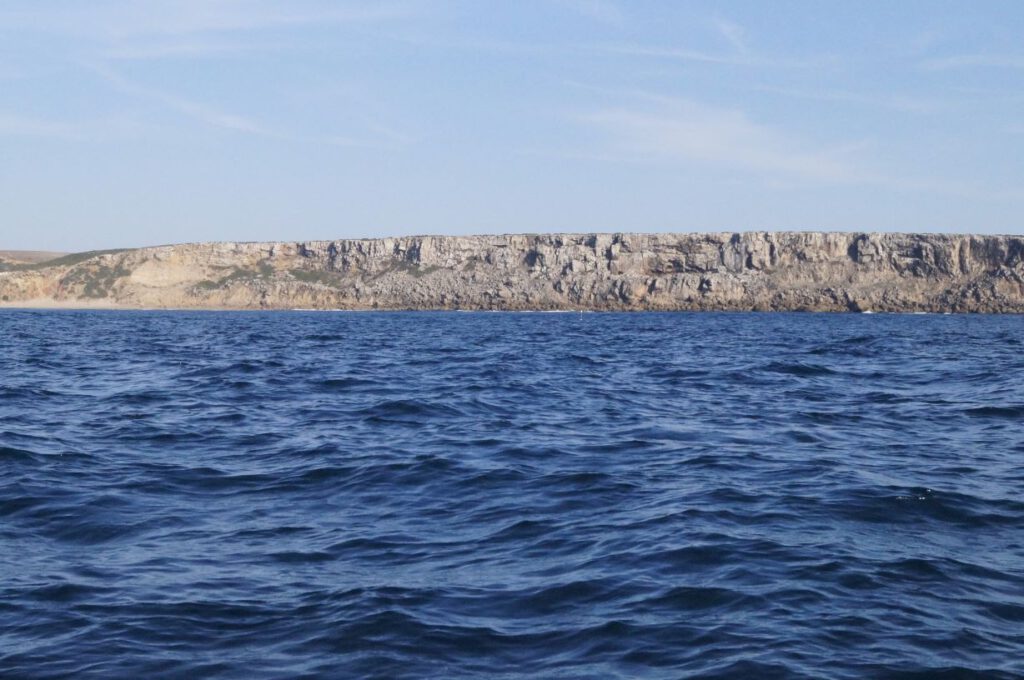
Rocky coast just before the cape, broken coast.
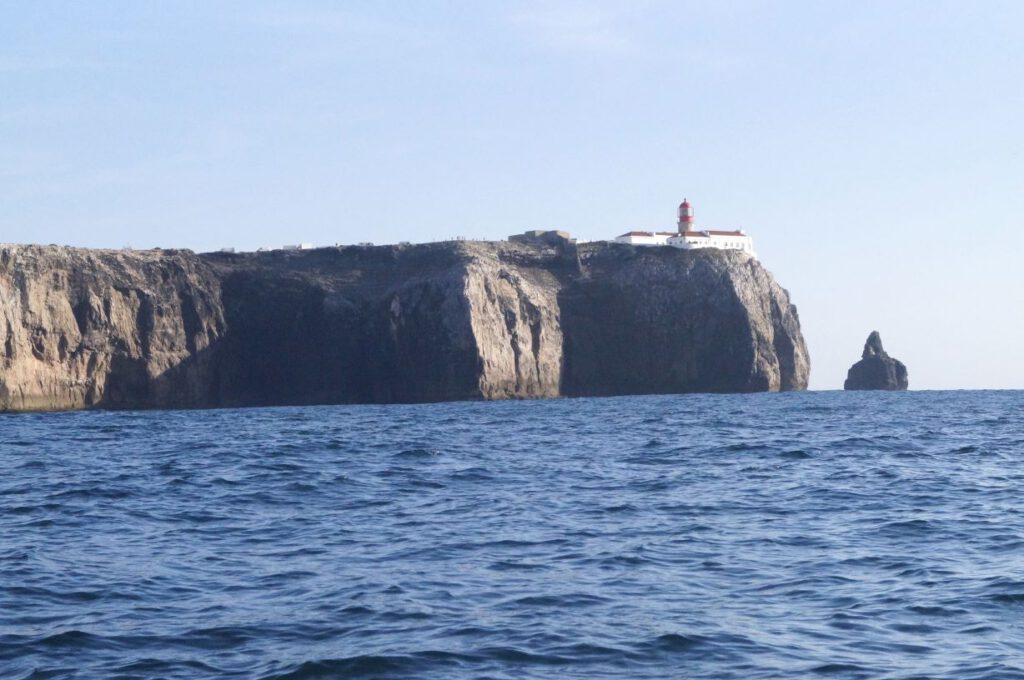
Cabo de São Vicente from the north with the stalls on it. The last Thuringian bratwurst before America is served there, they say.
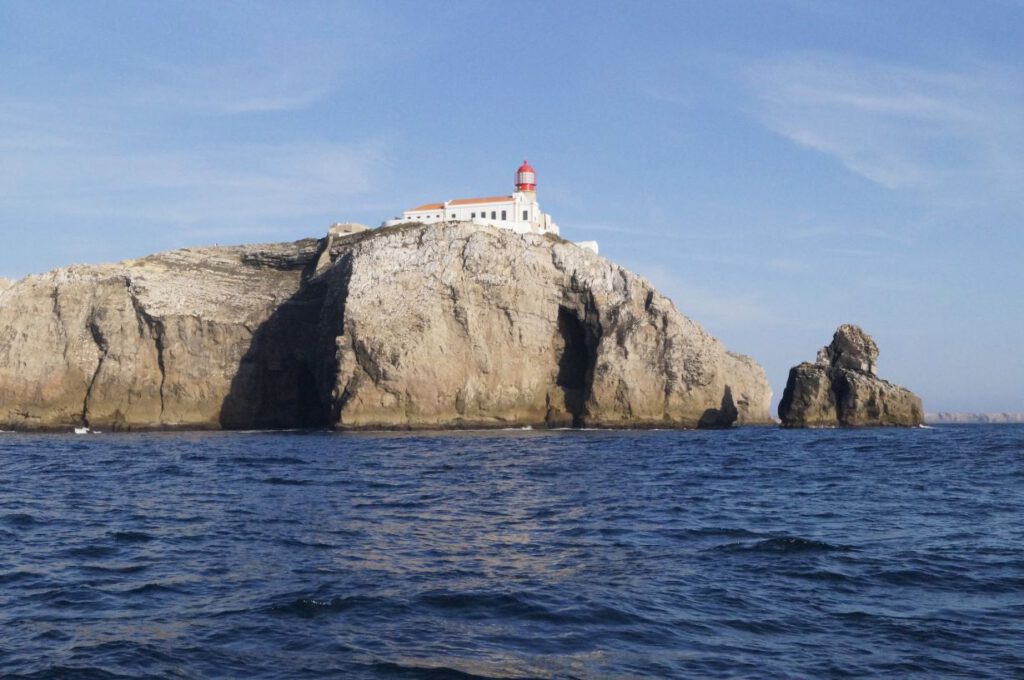
Cabo de São Vicente, right at the tip
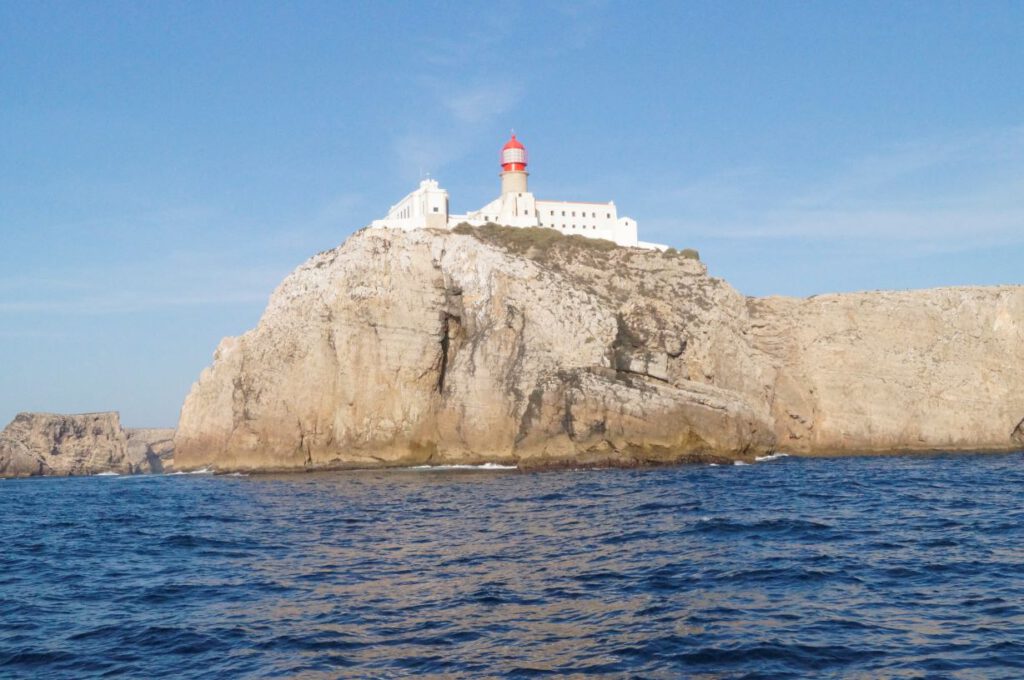
Cabo de São Vicente from the south.
Now it got heavy. I couldn’t explain the cross swell, but quite obviously the north-westerly swell intensified at the sight of the south-easterly swell. Before, it was not noticeable at all. There was probably also current around the corner, but not measurable. What else could I do but sail through, a nice rocking and rollercoaster ride. How fortunate that I am seaworthy. The westerly swell stopped after the second tip, but the south-easterly one stayed until the port of Sagres.
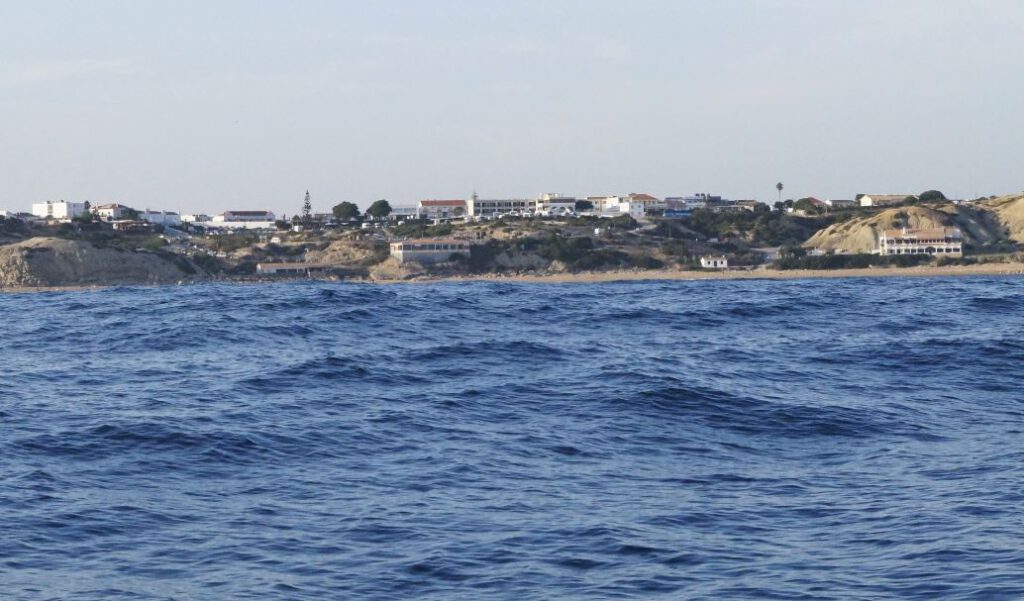
Sagres from the west
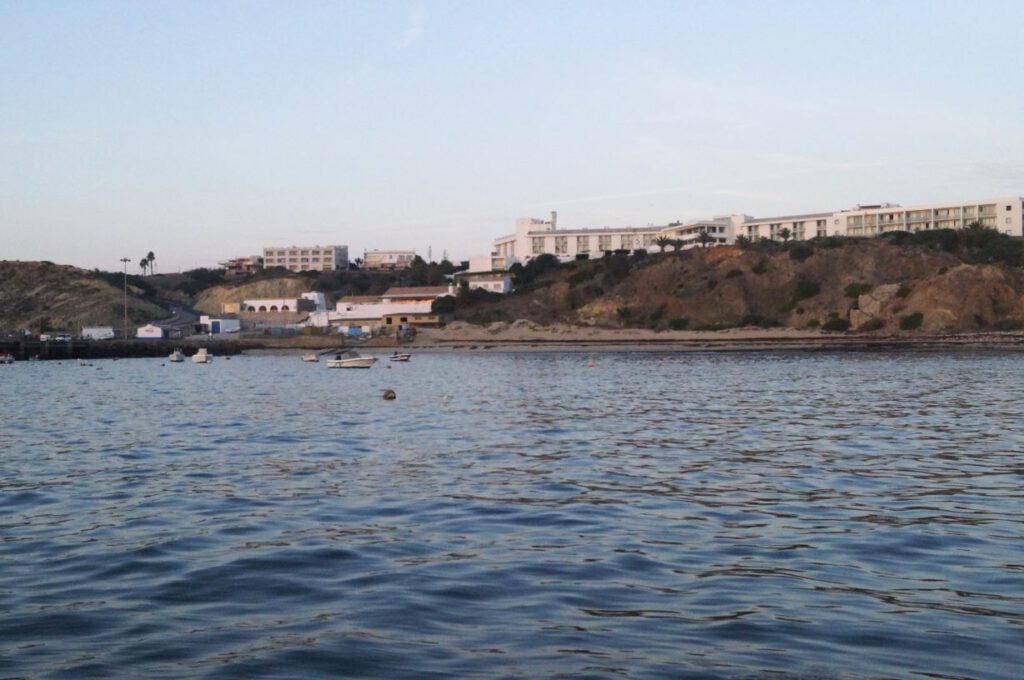
Sagres in the morning with resort.
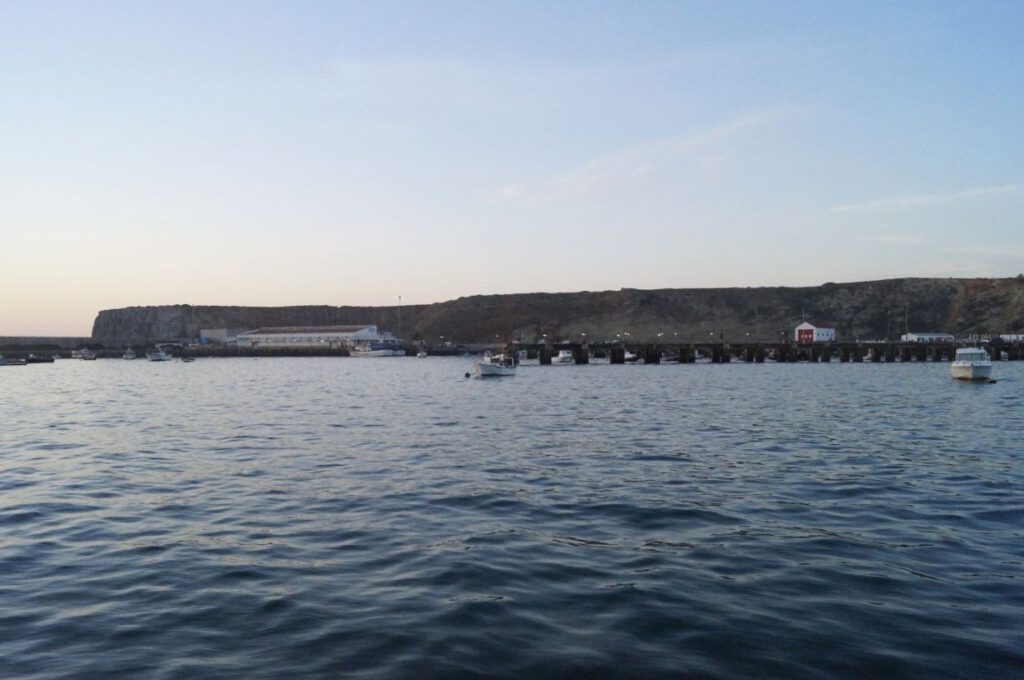
Fish landing sites in Sagres. The piers are probably no longer used. No wonder with this turbulent water. I tossed and turned in my bunk all night.
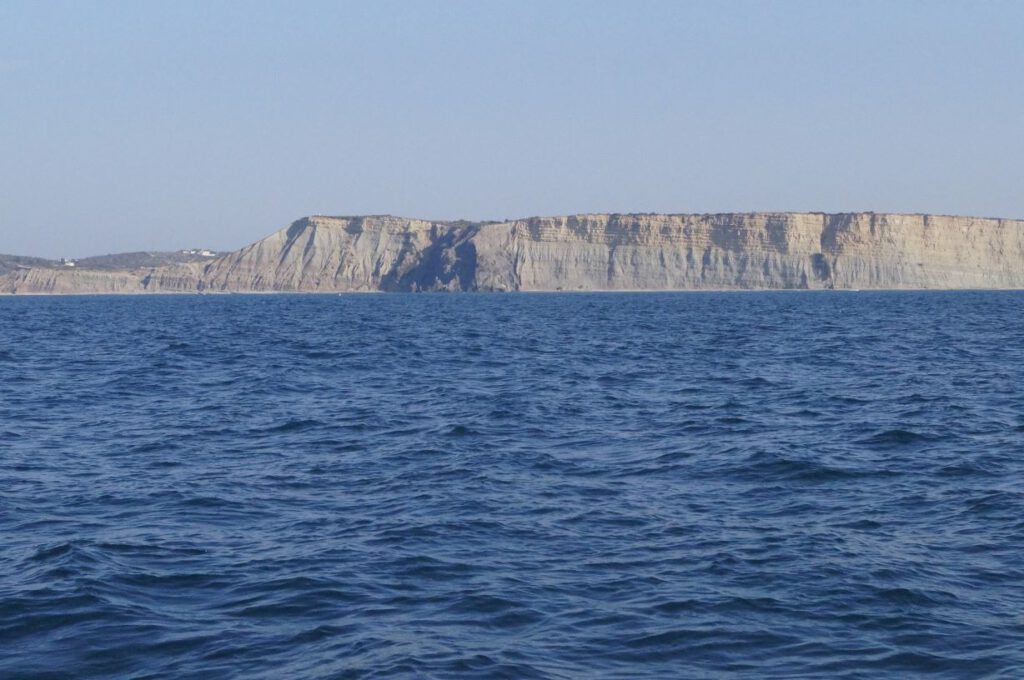
Just before Lagos. Is it a rocky coast or a cliff that breaks down more and more overtime?
I am pleasantly surprised by Lagos, as I imagined the places in the Algarve to be worse. But so far I haven’t seen so much from Lagos, because I still have to regenerate. However, I have already taken the outboard to a workshop, a thorough inspection is necessary. Lagos is different, I think the whole Algarve is different from the rest of Portugal; basically it’s touristy here on the coast. I’ll have to take a closer look from place to place before there are any comments or descriptions.
Tuesday, 7th of November
Olhão at the Ria Formosa
It’s been a while since the last entry, here’s a whole load of material. I’m writing this in a hotel because the nights were a bit chilly at 7 degrees.
Since Troy, investors have been popping up everywhere. No, not personally of course, but the impact of their investments. Although you can’t see it directly, a clear view of the Algarve coast is impossible without some background knowledge. As in Spain, in Portugal foreign investment companies are responsible for the construction and operation of these hotels. It is almost impossible to determine in detail who is behind it, but rumour has it that it is mainly American and Chinese capital, as well as that of Middle Eastern oil oligarchs. It’s always about efficiency, i.e. a small footprint with many floors. Spain pulled the emergency brake 20 years ago before everything built on the Mediterranean coast. When will Portugal follow? Because it doesn’t bring the wealth into the region, others earn it. According to Engel and Völkers, a Hamburg real estate agent, Portuguese own only 20 percent of properties.
This I have to tell you before I try to explain why my euphoria about this beautiful country has waned. Coming from the west coast, I was used to sailing along miles of deserted beaches. Sporadically, I could spot a busy beach and even lonely hotels. Here on the southern coast of Portugal I hardly see any undeveloped stretches of coast, even up on the rocky coast near the edge there are many houses. In addition, that started behind the second peak just before Sagres, the Ponta de Sagres. From Lagos to just before the beginning of the Ria Formosa it was permanently present. This spoiled the view of the actually very beautiful and impressive rocky Algarve. I was not prepared to see this kind of tourism here; I have no illusions about the Spanish Mediterranean coast.
Lagos is slightly different in terms of building development. In most cases, you will find low buildings and a more delicate design. However, you will find countless pubs, restaurants, and souvenir shops in the old town. Here people feast, drink and stock up on unnecessary things. And it was crowded all day, it was almost impossible to get through. A few streets further up in the local town there was nothing going on, no shops, and so no tourists. The main languages are English and German, especially in the marina.
The beach was also manageable, you could still count the number of people. The harbour is dominated by white-painted concrete buildings, which are only two stories high, but there are many restaurants and pubs, some of which were open late into the night.
I was stuck in Lagos for a long time. It took almost a week to get the engine back. Stormy south-westerly winds then blew for a few days. This led to larger waves that broke out impressively on the south coast. Unfortunately, I was unable to pick up Barbara for this reason by boat, as it was not possible to sail towards Faro. So I had to take the train to Faro to pick her up. The train ride showed me a different Portugal, similar to the first train ride from Figueira da Foz to Coimbra. The railway line runs through fallow fields and past abandoned buildings. Much is left to decay. Some are trying to grow the tasty oranges using modern agriculture. The trees are in rows and probably harvested mechanically. The ones can’t afford it, they’ve probably moved away. The numerous “Vende-se” signs bear witness to this. However, who would buy land here without a sea view?
A few impressions of Lagos
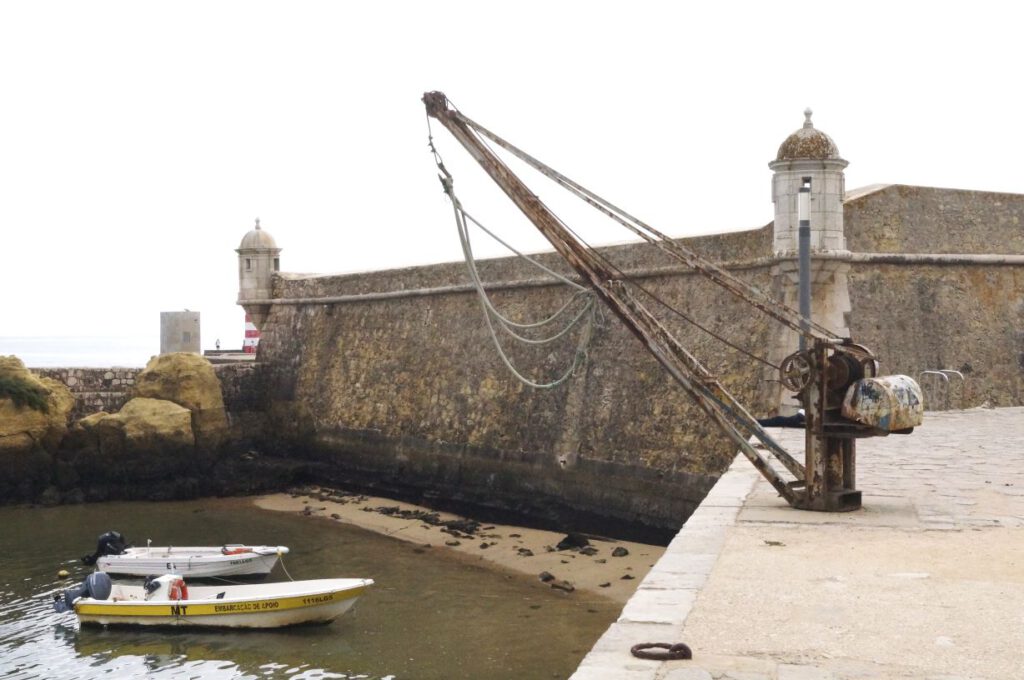
Lagos, a fort to protect itself from Spanish pirates. The first slave market on European soil was located in Lagos and brought Lagos wealth.
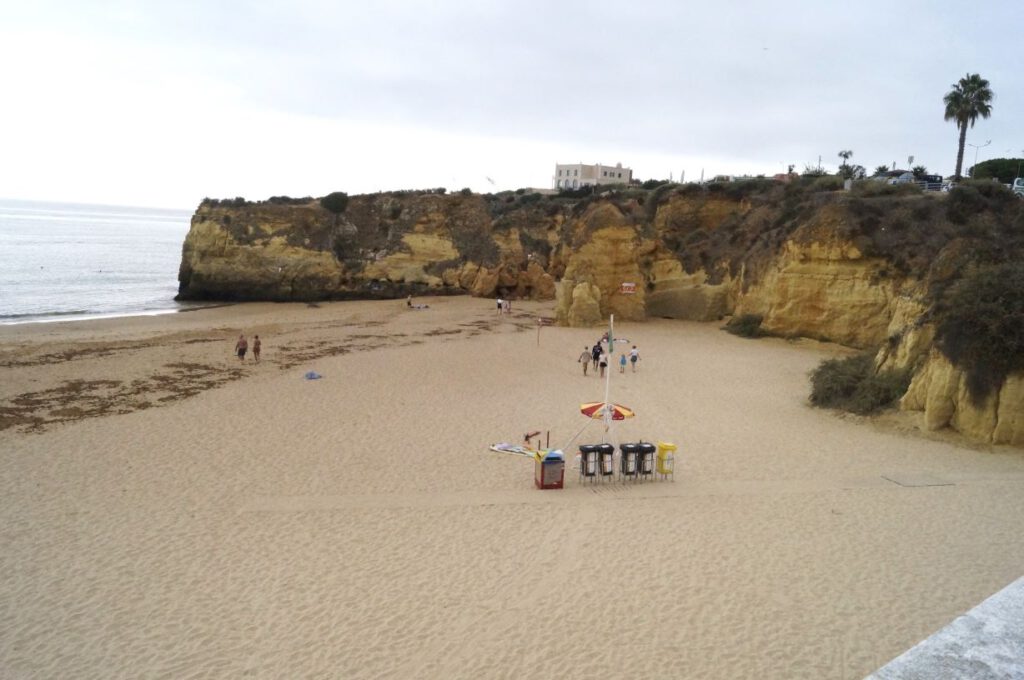
Lagos, the potato beach.
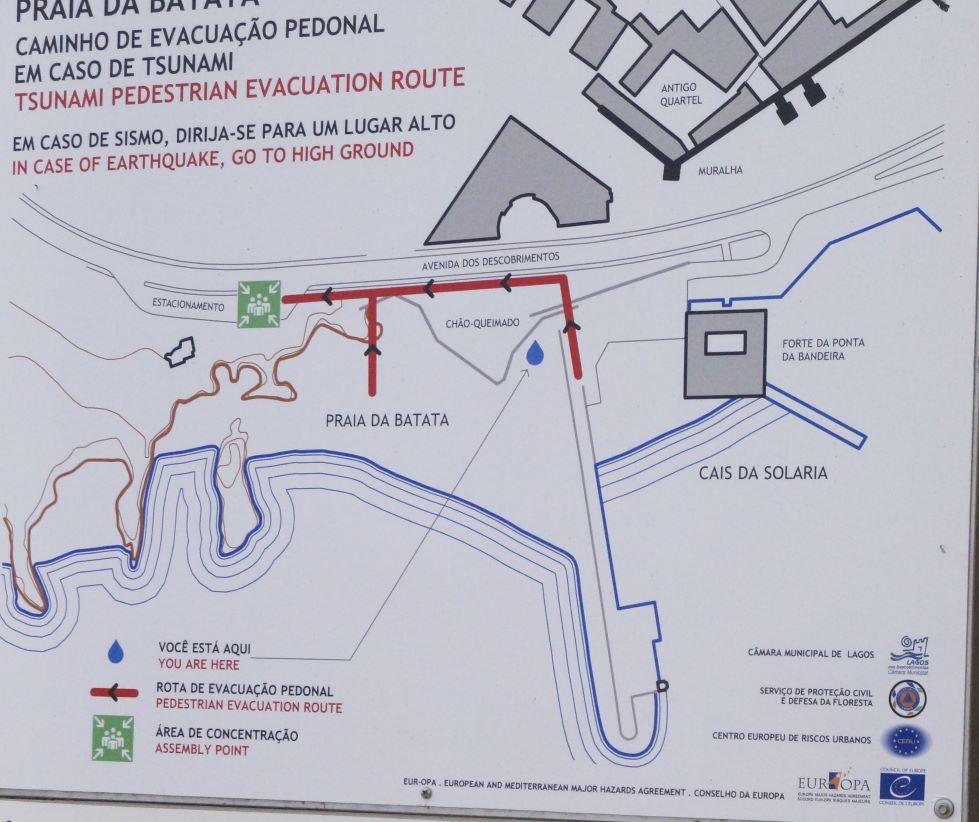
An evacuation plan in cases of a tsunami after an earthquake. Here earthquakes really do happen, but no one can remember a tsunami.
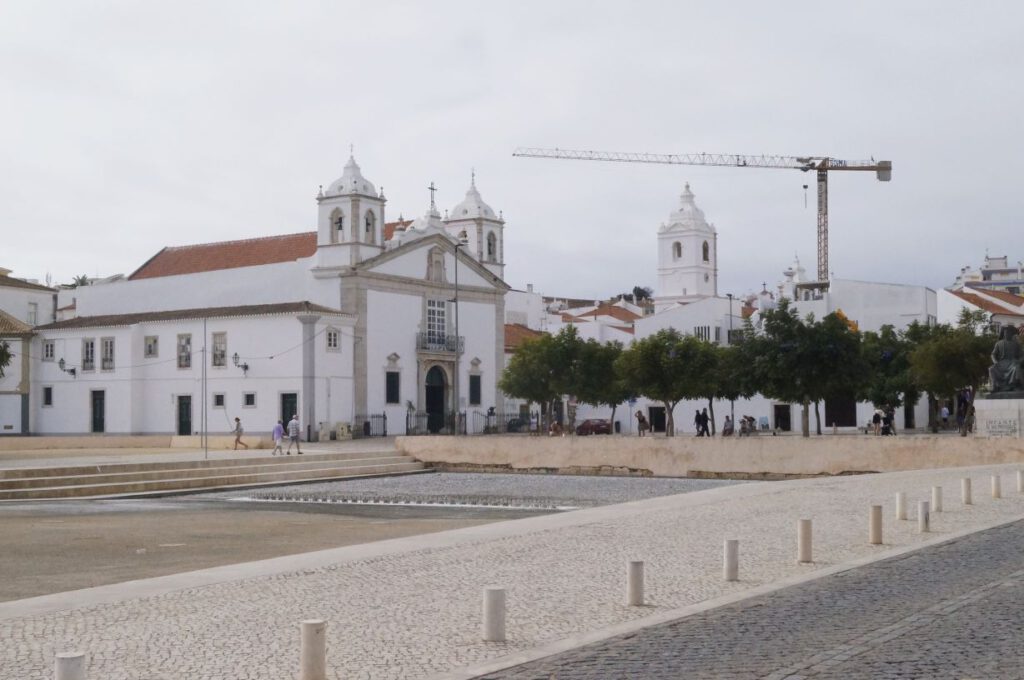
Lagos, the obligatory cathedral
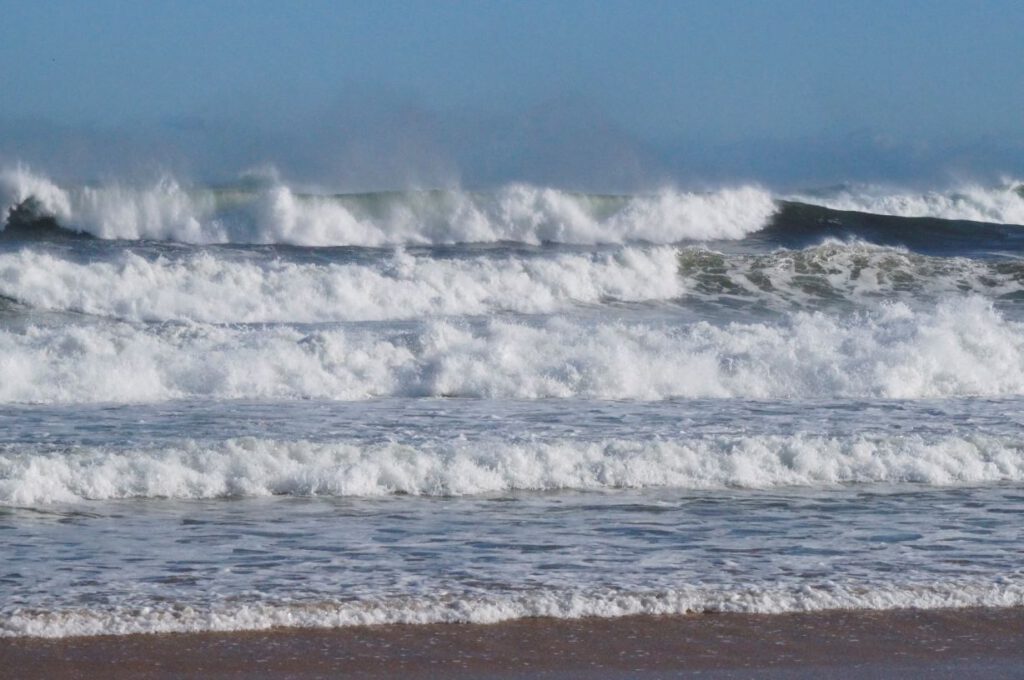
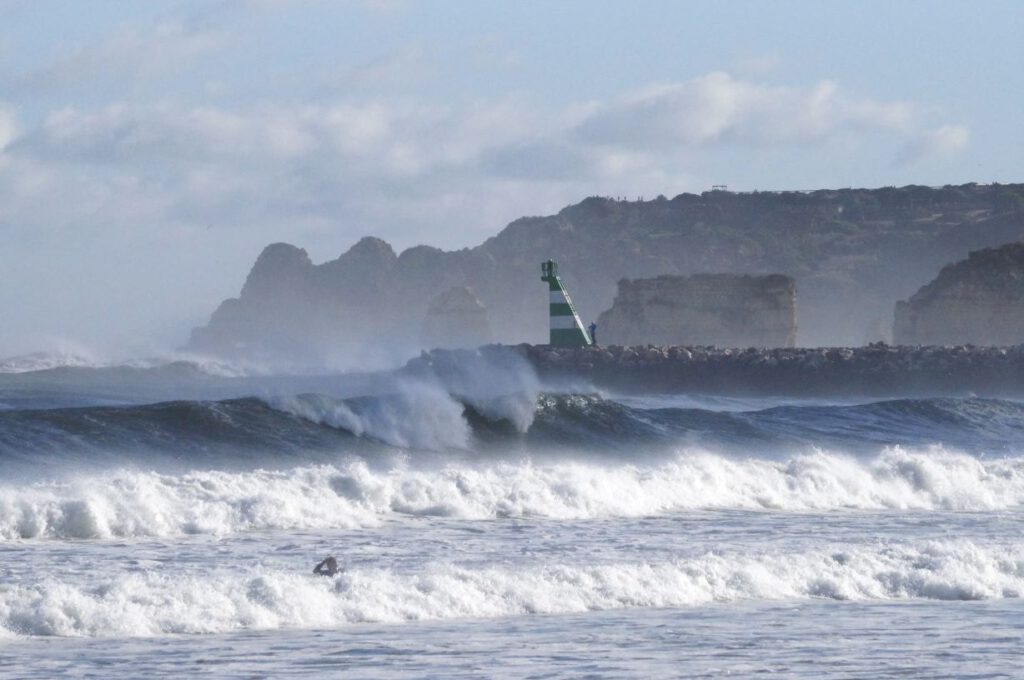
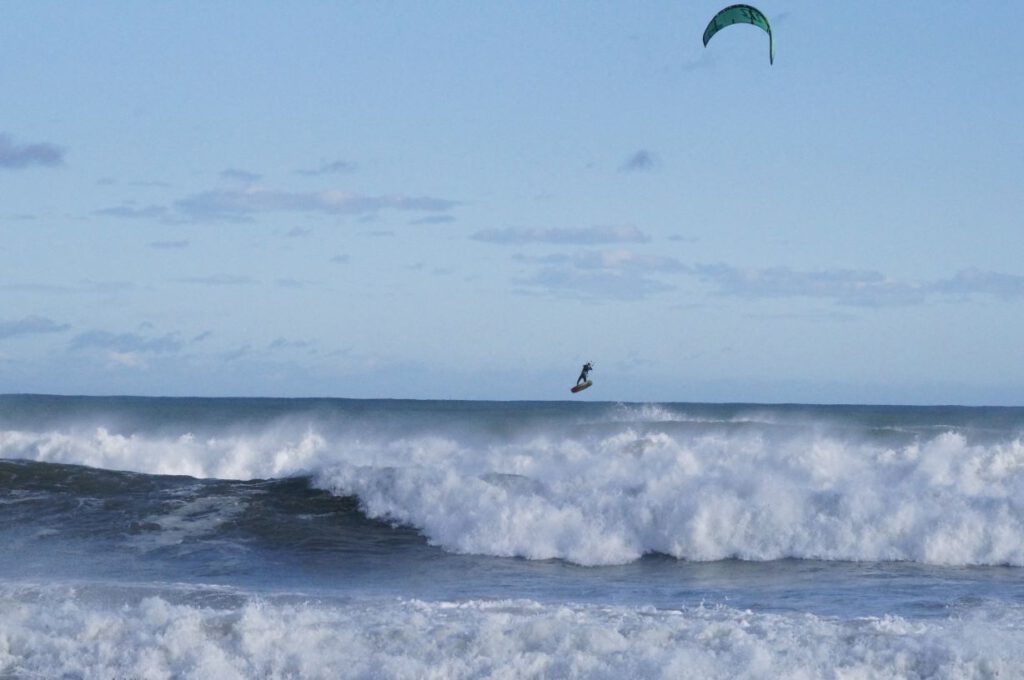
Lagos, pictures of the beach in the onshore swell. Yes, there is really a kiter flying.
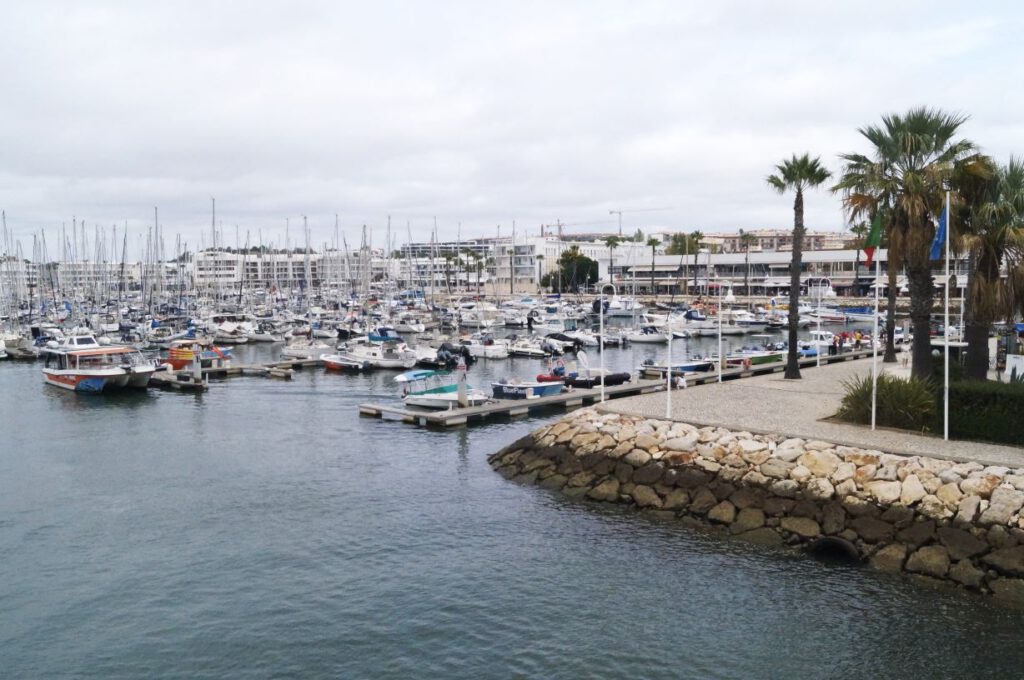
Lagos, the harbour
Then we sailed from Lagos to Portimão. Here the weather became very changeable again, including strong waves. There was actually an official warning one day that large waves of 6 to 8 meters, with peaks of up to 14 meters, expected from the northwest. We waited in vain for these waves on the beach, but they were up to 3 meters high. From Portimão we explored the west coast by car anyway. But we only did that once, it was a strenuous ride through the nature park, up and down, sometimes left, sometimes right.
We made a flying visit to Alvor for a meal and what can I say, it was very touristy.
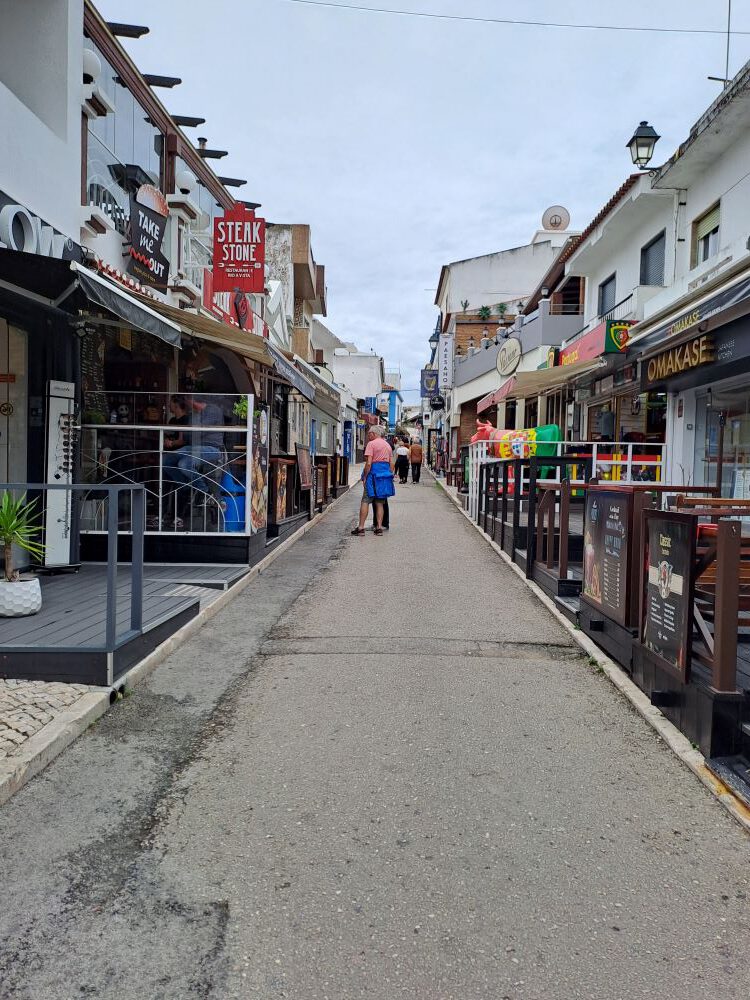
Alvor
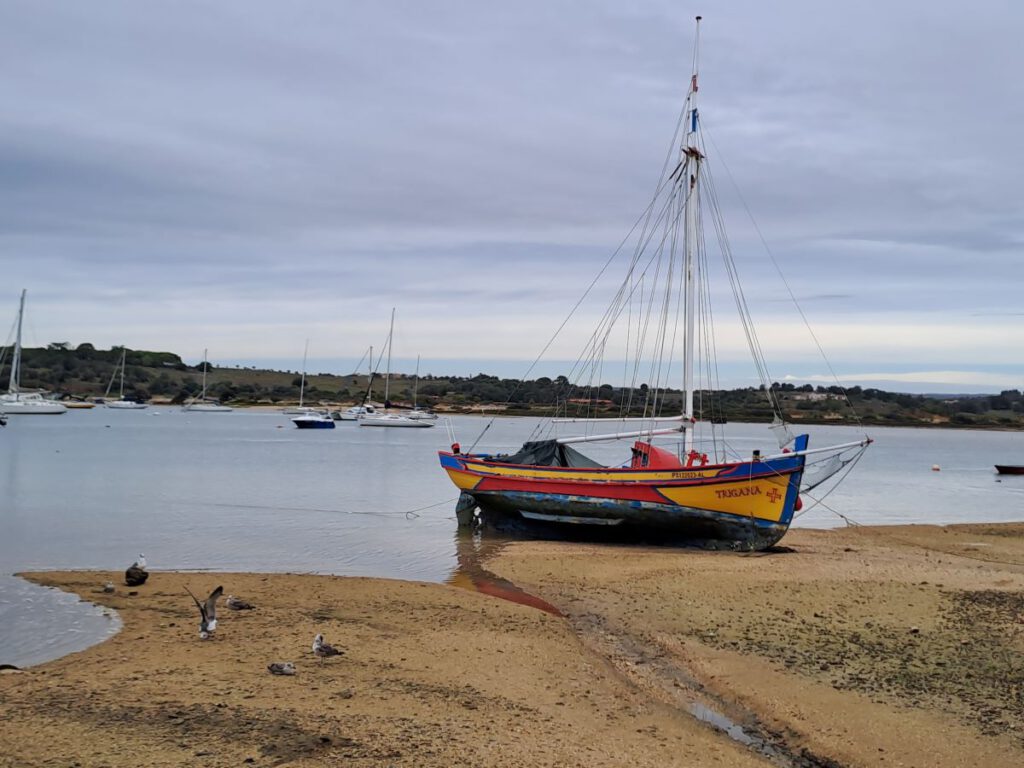
The bay of Alvor
With practised tunnel vision, we found a few nice spots in Portimão, and even from our berth the surroundings looked like not so bad.
The harbour-panorama with the other side of the river.
Wave surfers in the not so high waves, a long wait until a suitable wave appeared.
A visit to Ferragudo on the other side of the River Arade also reconciled us somewhat. If only we had stayed there and not travelled on to Carvoeiro. Quickly we just passed through there and didn’t stop. Carvoeiro is said to have once been a very manageable and beautiful place.
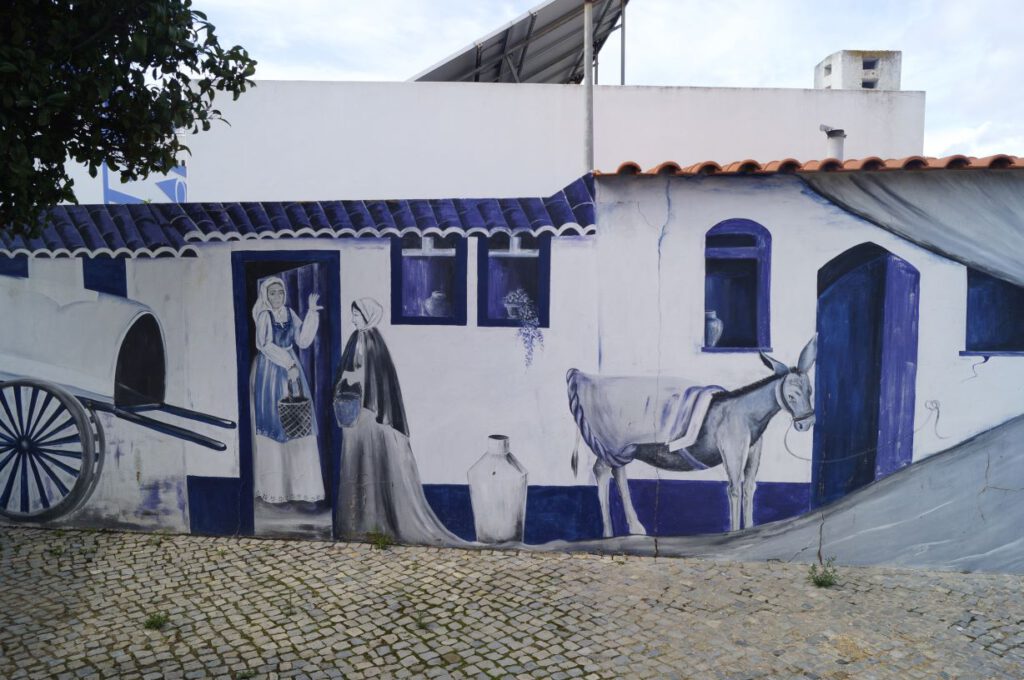
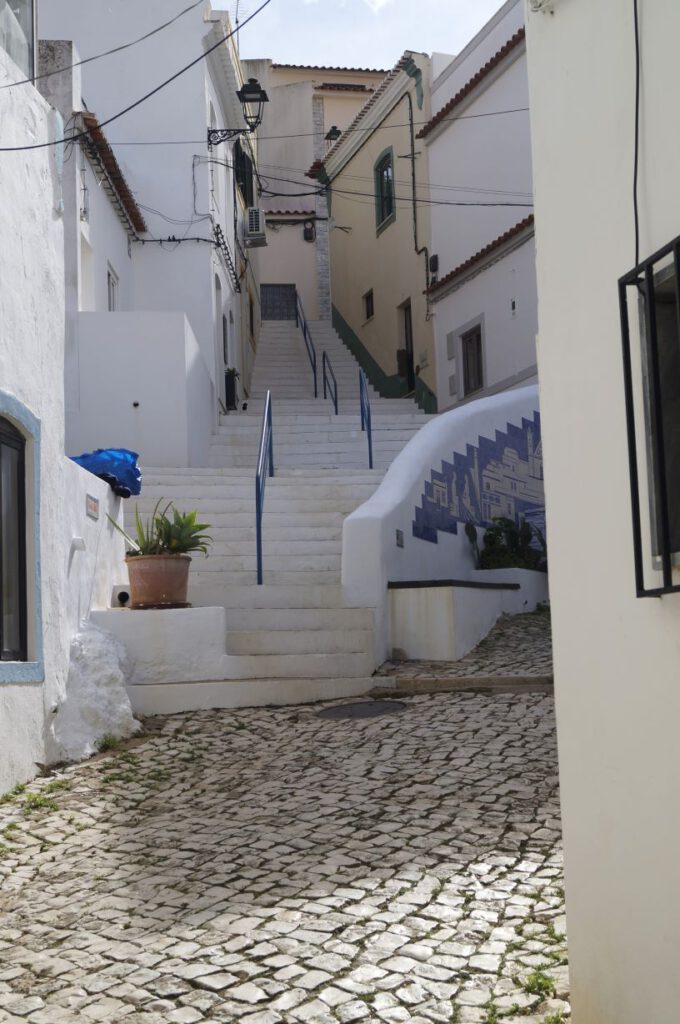
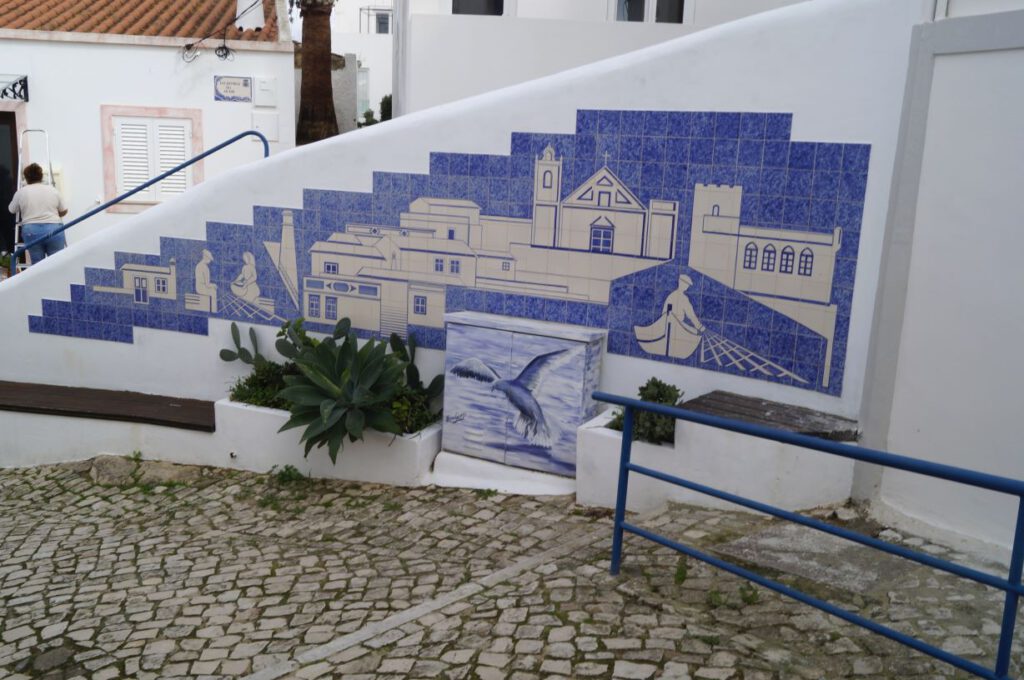
Ferraguda with its narrow streets
Then I sailed on from Portimão on my own. Barbara travelled to Olhão by car and had already checked in to the hotel there. With a stopover in Vilamoura, it took me two days of beautiful sailing to reach Olhão.
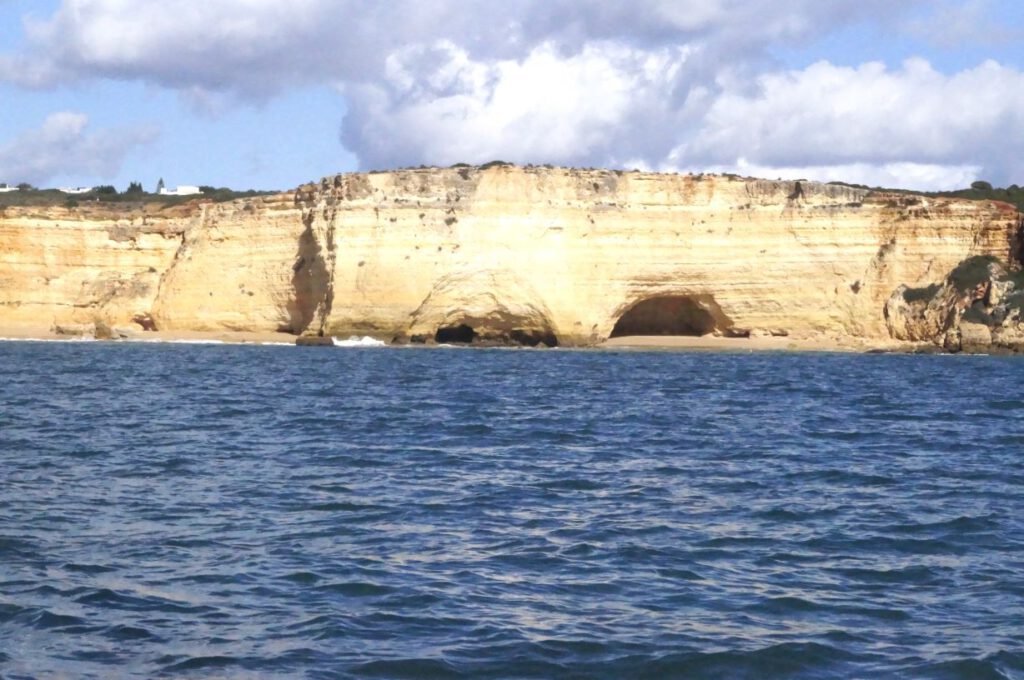
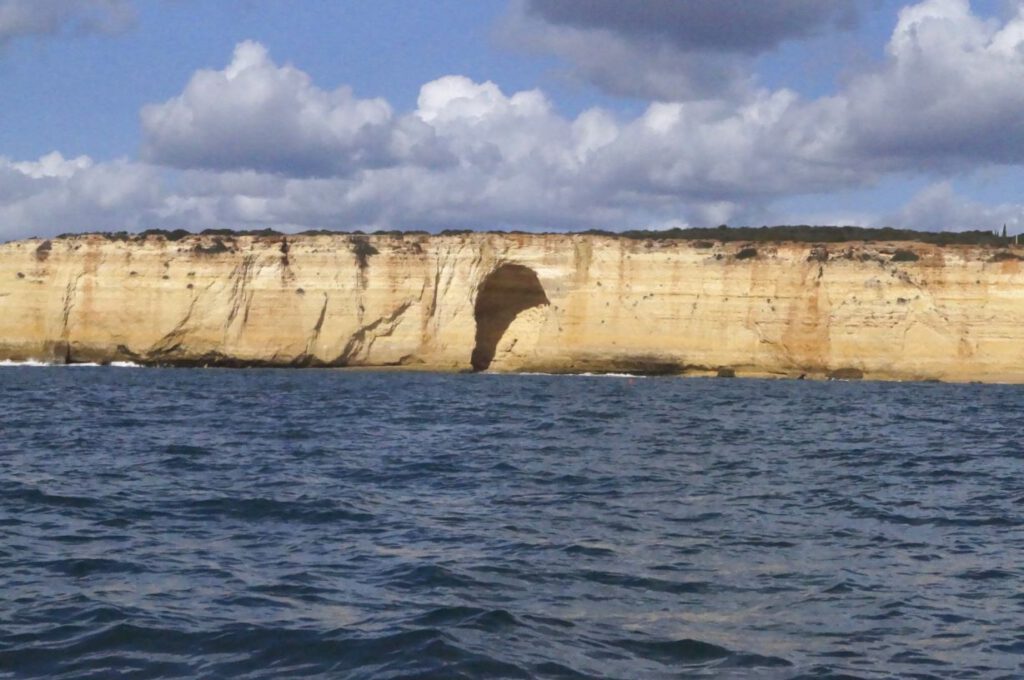
This rocky coast near Benagil is so beautiful.
The coast near Carvoeiro
Albufeira
Vilamoura
The last concrete stronghold before the Ria Formosa.
Beautiful sailing along the sandy beach near the entrance to the Ria.
The entrance to the Ria Formosa, Ilha do Farol.
The few hotels are not very nice either, but on the right, you can see the old town of Olhão.
Friday, 17th of November
Vila Real de Santo Antonio
Today it is my last day in Portugal, tomorrow I’ll be back in Spain and in a different time zone. It’s a strange feeling, once crossing the River Guadiana, and it’s an hour later. Tomorrow I’ll try to reach Mazagón, another 32 nautical miles, and this time I’ll book online. Here it is common practice, and you save yourself discussions and stress if you haven’t done it. Yes, I am now travelling alone again. Single-handed sailors sometimes just don’t have a free hand for radio communication when they’re travelling.
The Ria Formosa area from Faro to Manta Rota showed us and me the tranquillity of Portugal again. Whether in Olhão, Fuzeta or Tavira, you meet lots of locals everywhere and hardly any tourists. Many people, however, visit Tavira from Spain, but they are all tourists for a day. In Fuzeta, the coffee tasted the best, not the hard and bitter drink, but coffee with flavour. It was great that we had hired a car so we could explore the Ria and the neighbouring countryside. Unfortunately, this is only possible to a limited extent by boat; the only safe passages through the sand islands are at Tavira and Ilha de Farol, the entrance to Olhão.
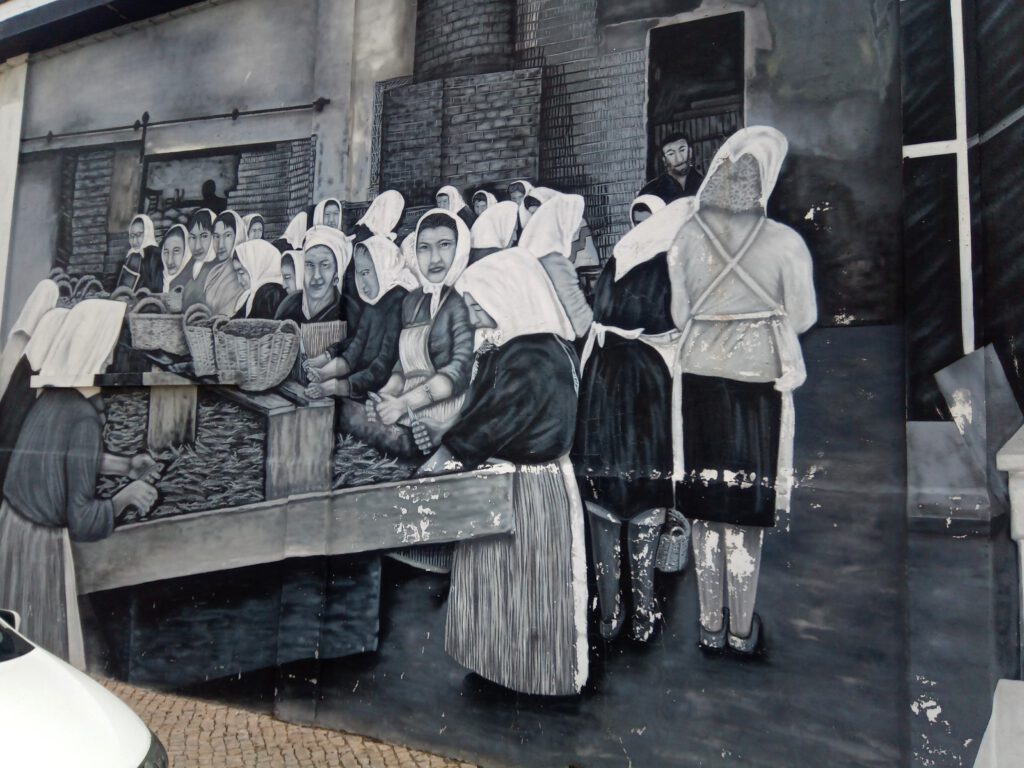
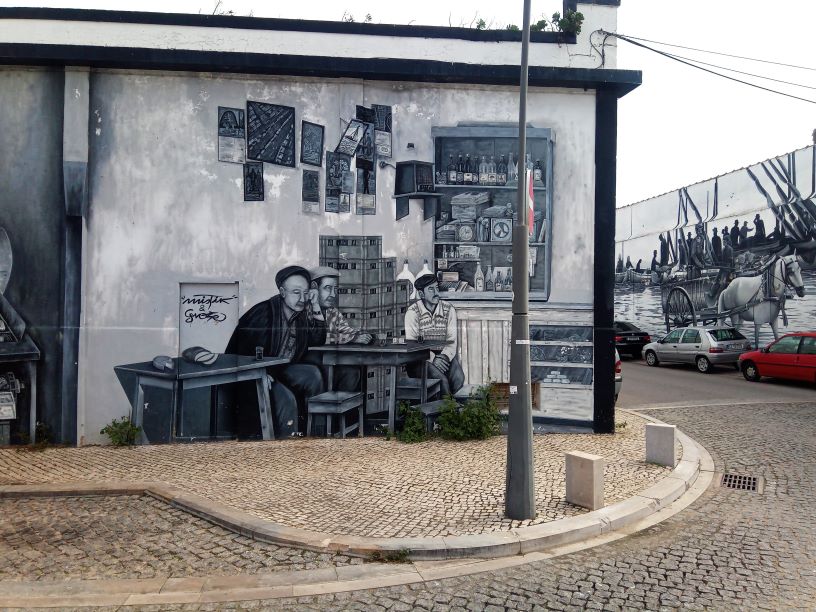
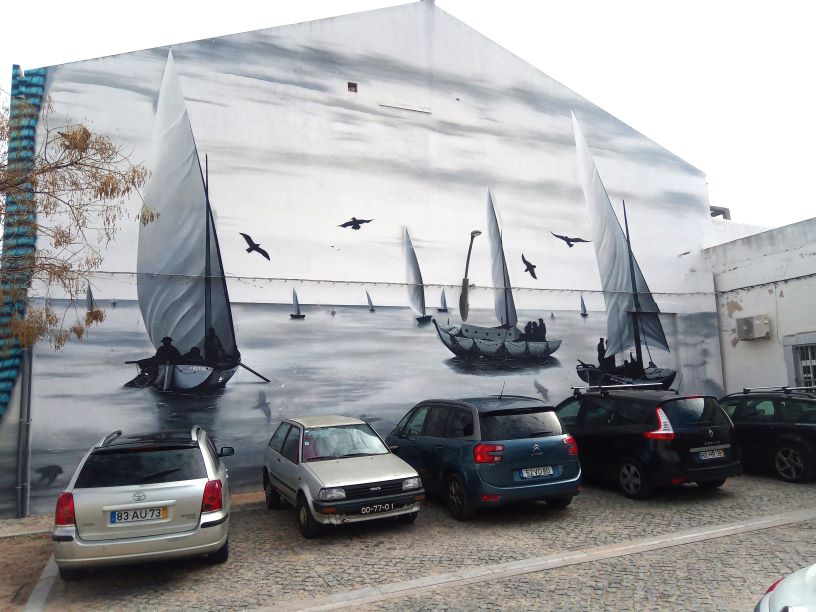
Olhão has a street artist who has been able to let off steam on many of the house walls.
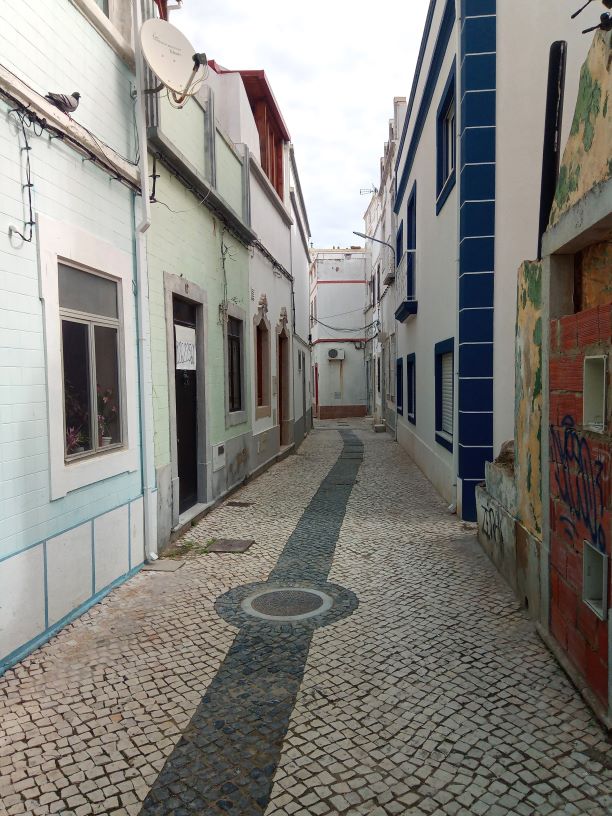
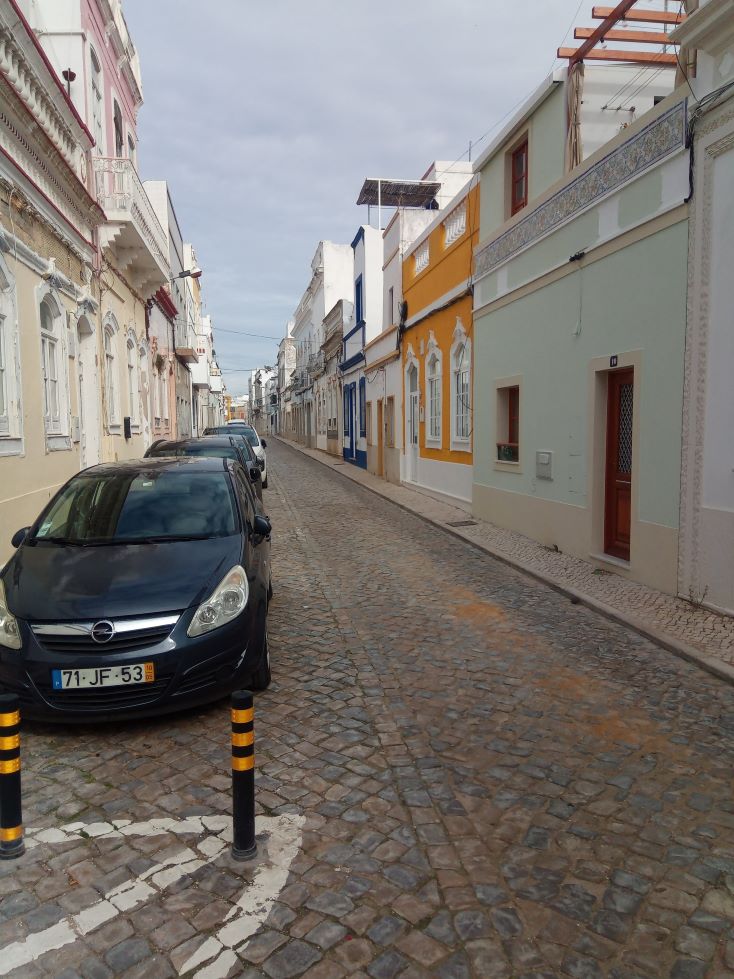
Beautiful alleyways once again
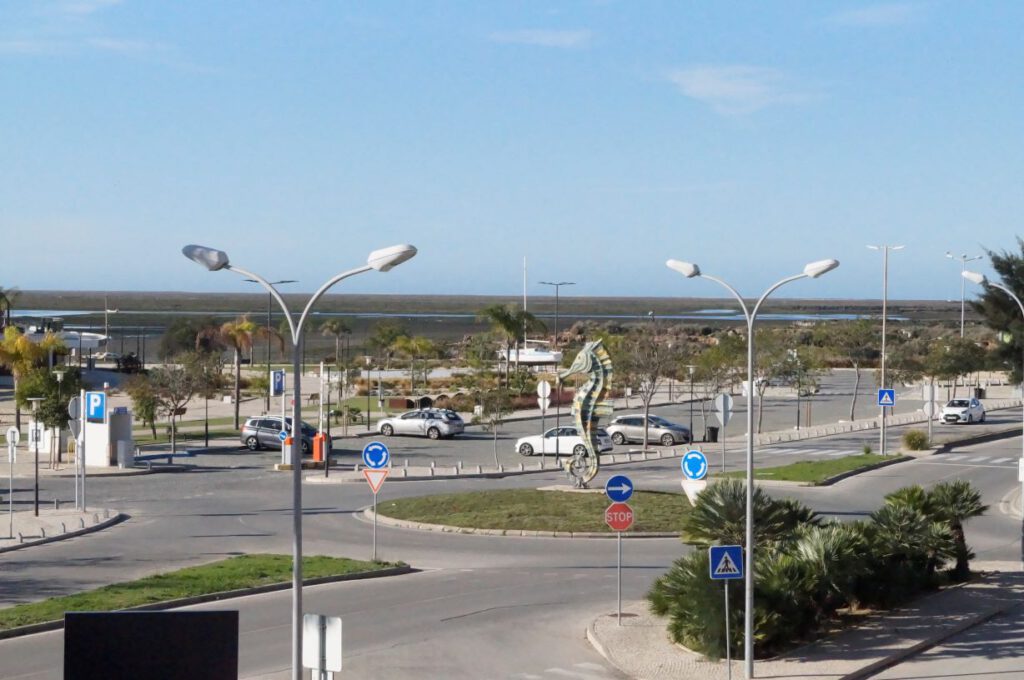
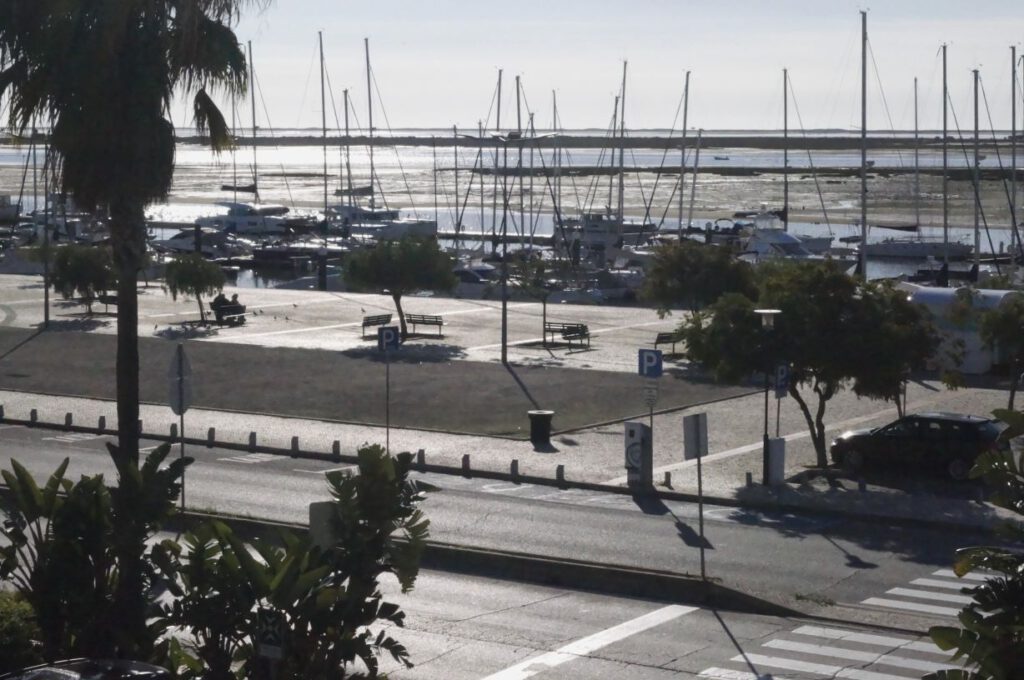
Views over the Ria Formosa from the hotel
A view along the Ria towards Faro
Shortly before reaching the Farol jetty, a view of the entrance with the towers. A trip to the island of Culatra gave us some special impressions.
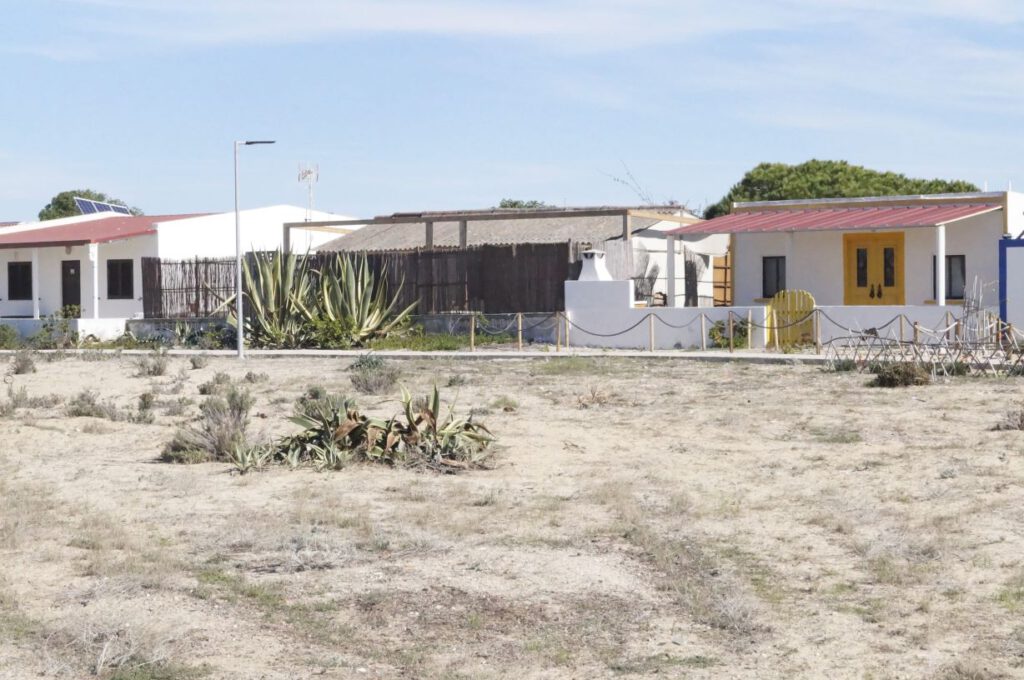
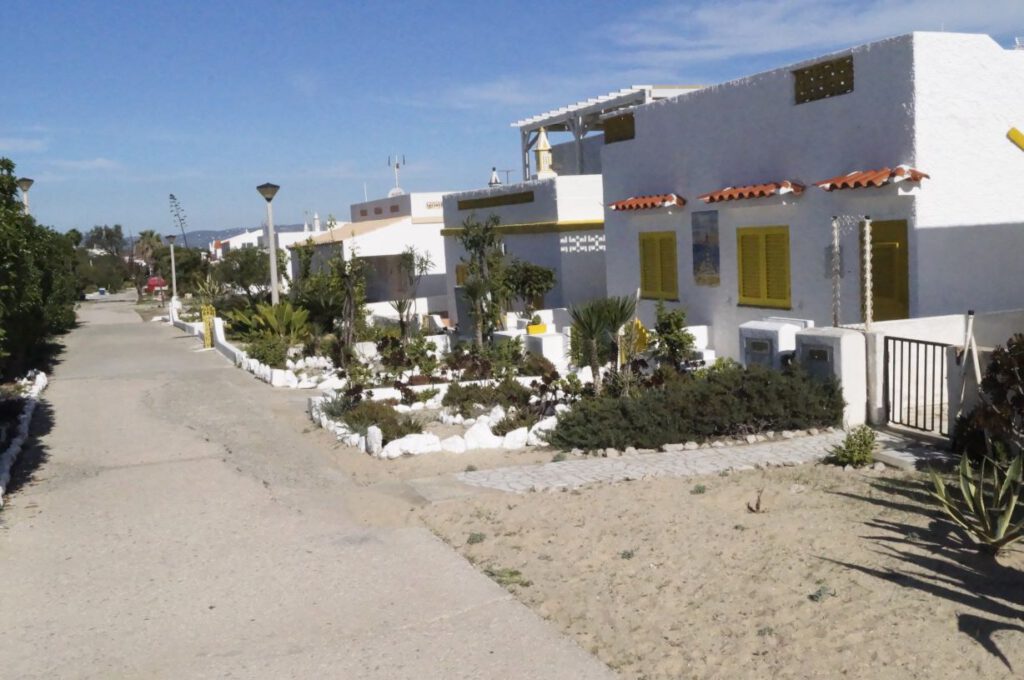
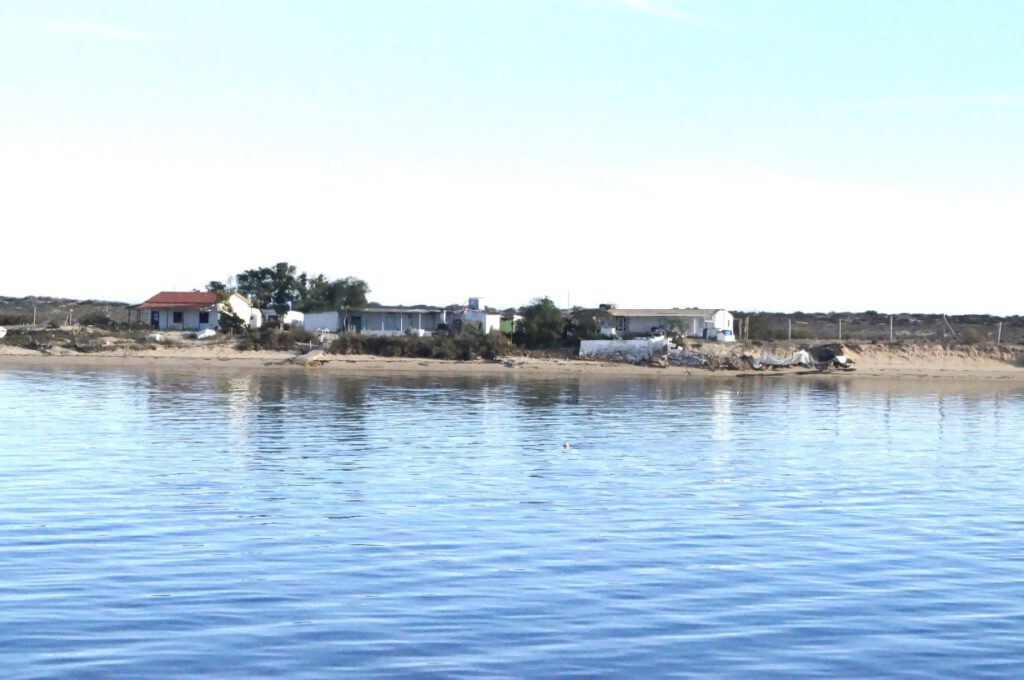
These houses could also be in Texas or Mexico. I’ve never been there, but many pictures from there have a similar character.
This is what it looks like in Tavira.
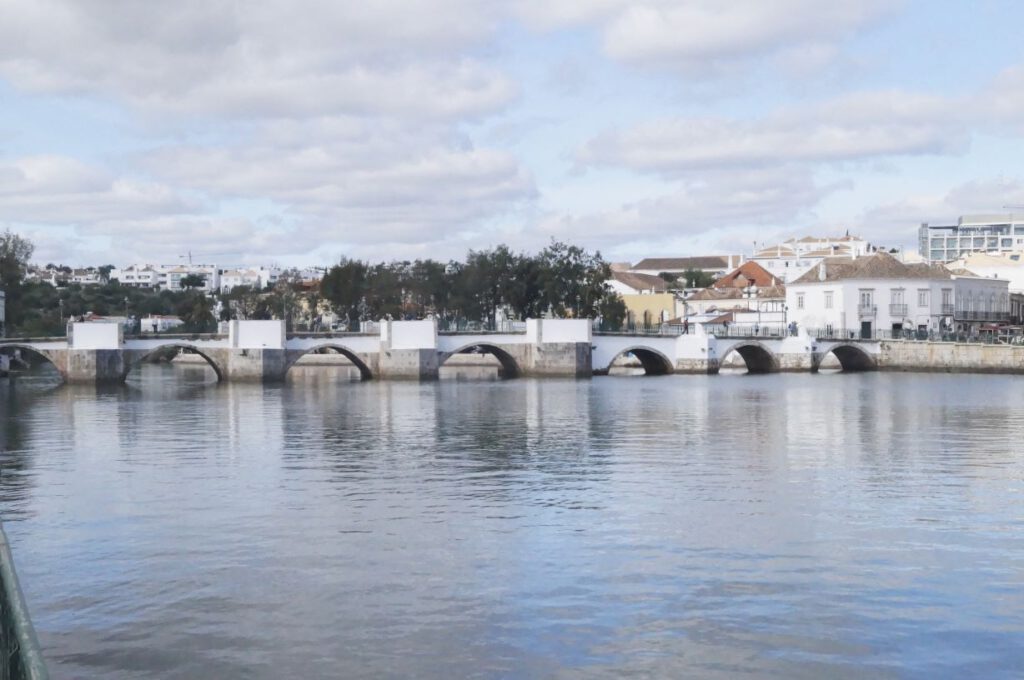
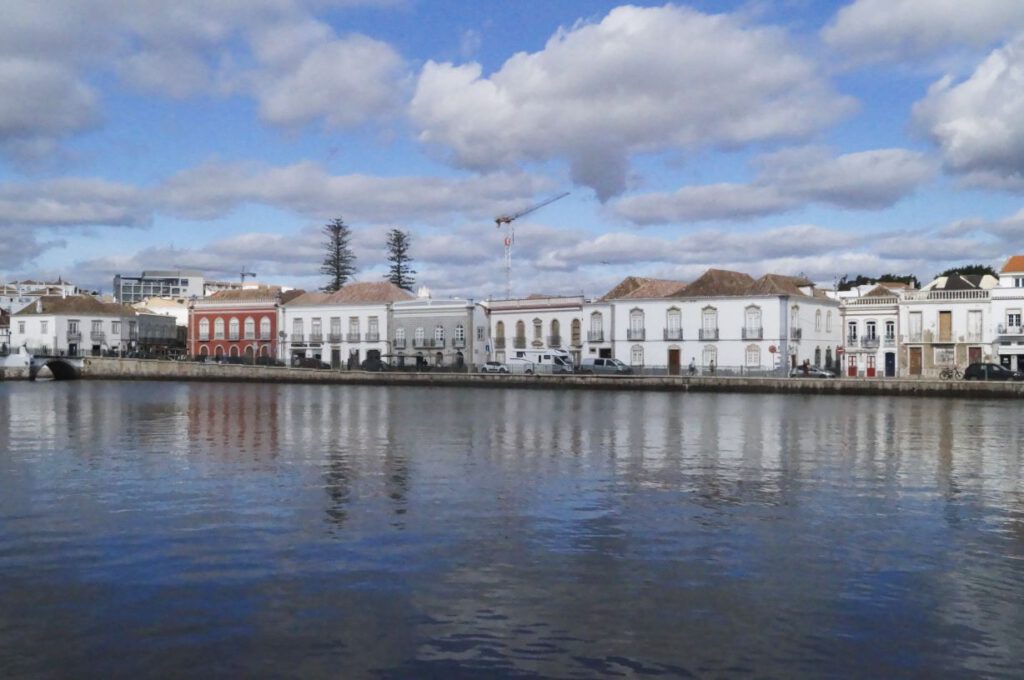
Bridges and houses in Tavira, the largest town after Faro in the Algarve and with a lot of history.
Beautiful impressions of Fuzeta
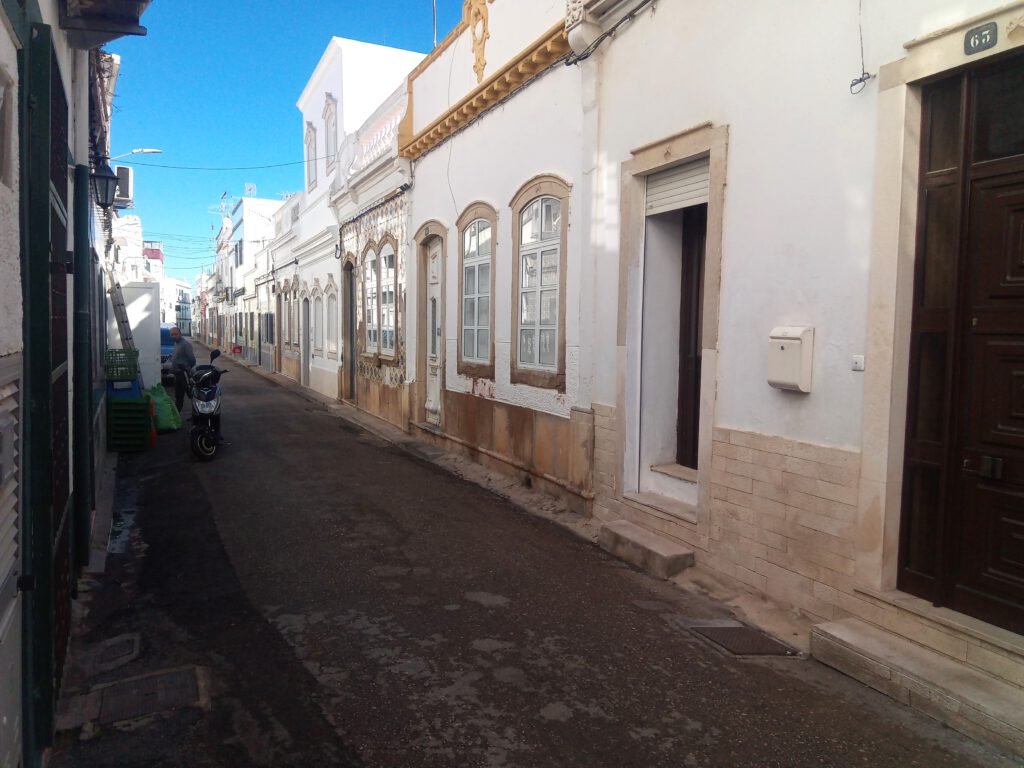
Many houses in Fuzeta have roof terraces
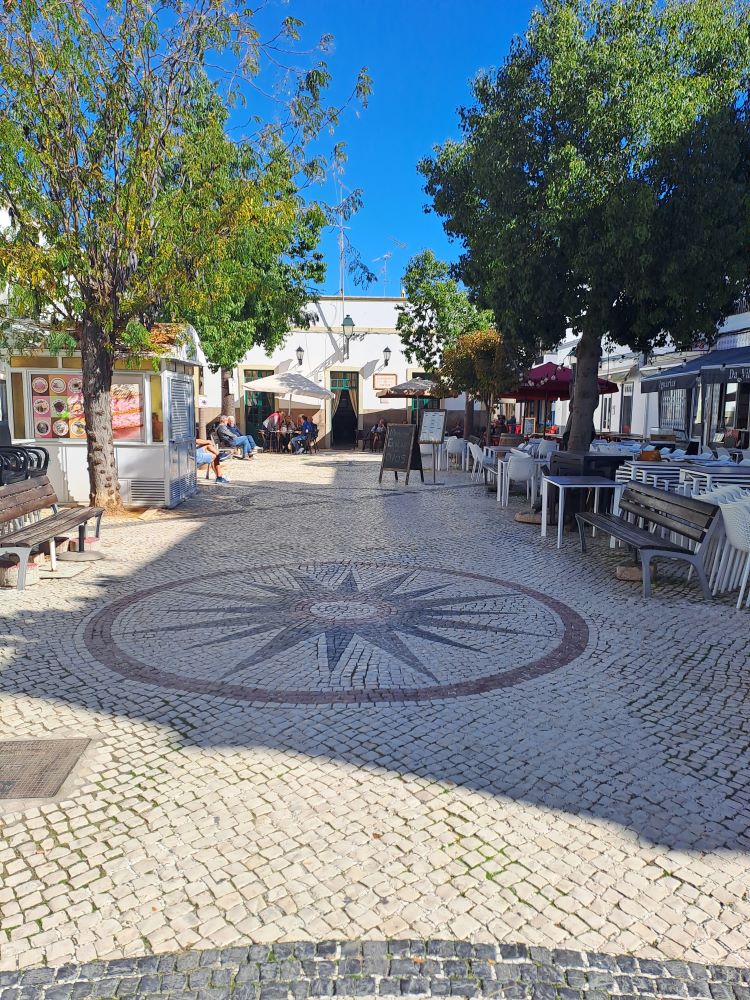
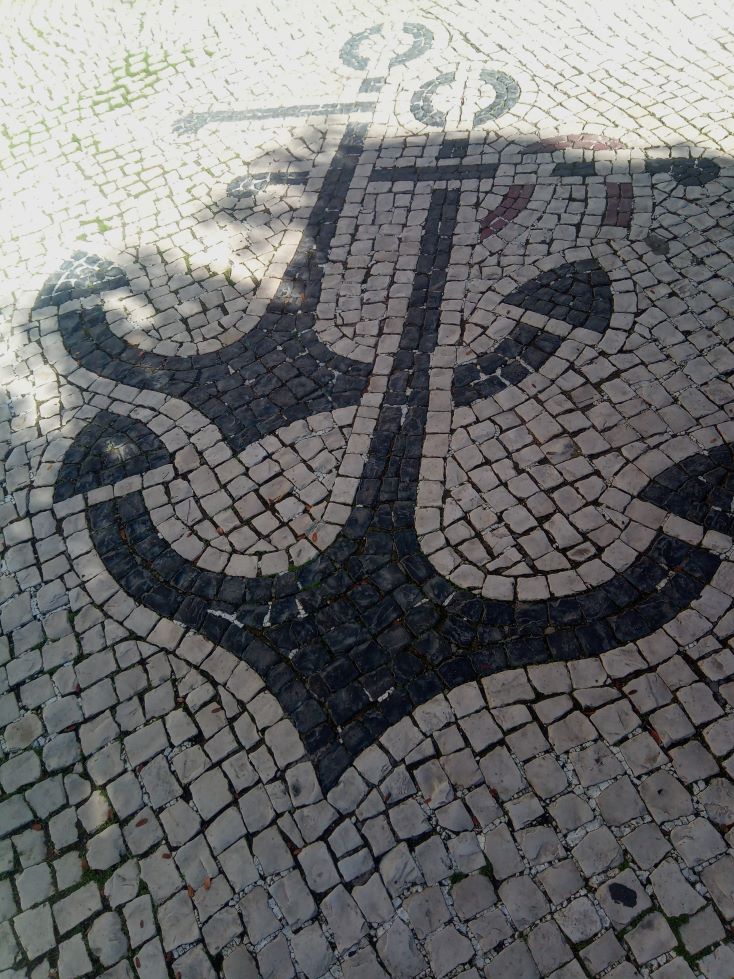
Motifs on the streets again and again
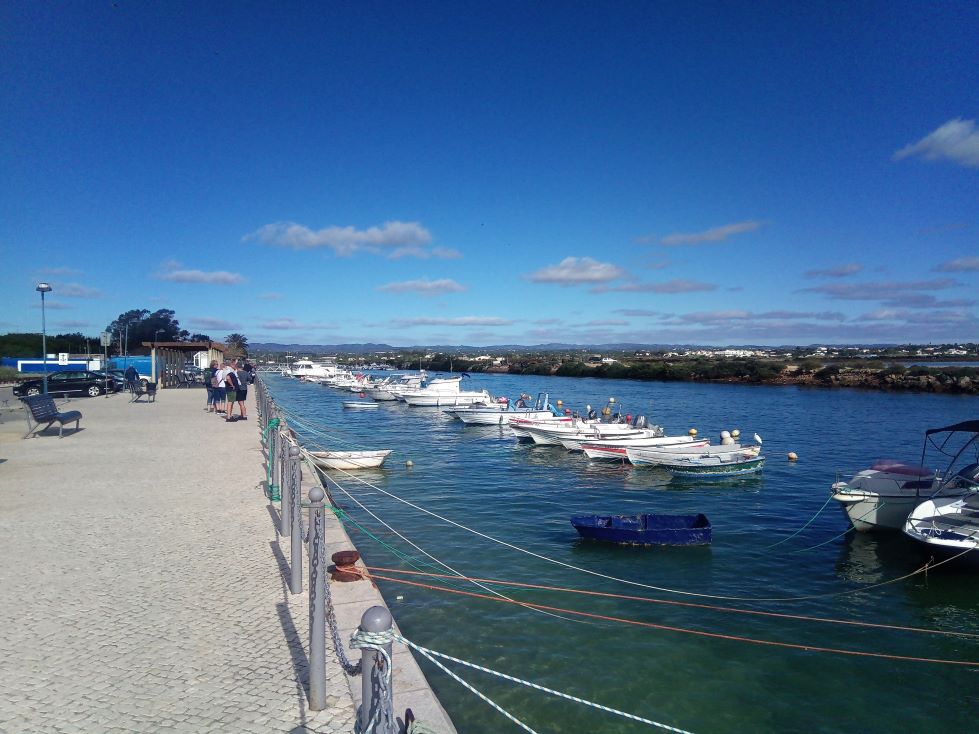
The harbour of Fuzeta
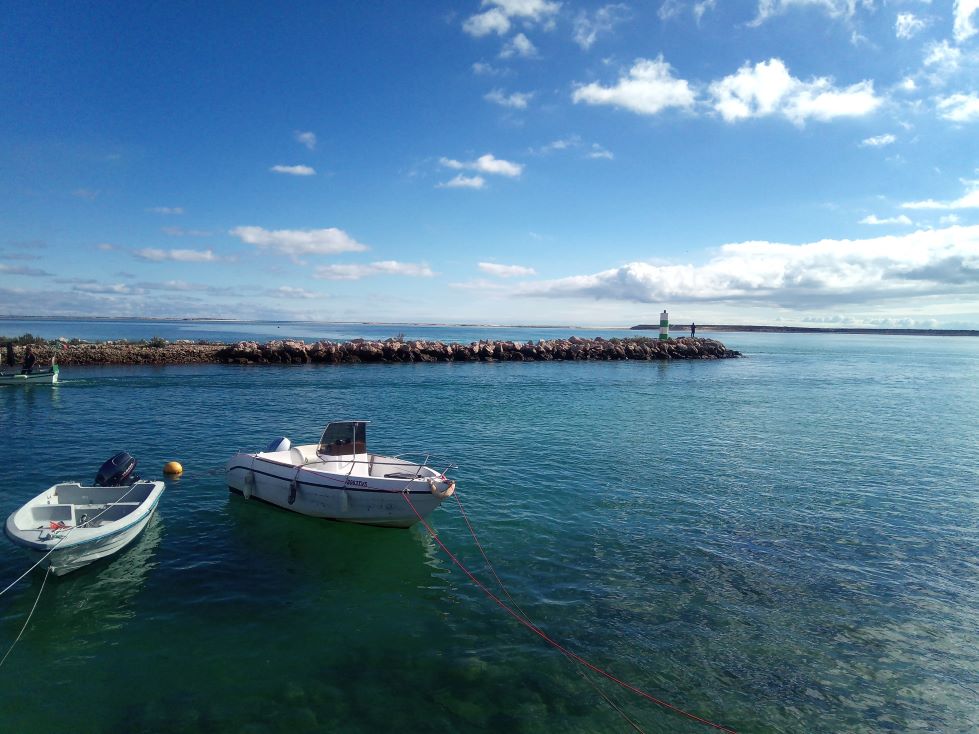
The entrance to Fuzeta
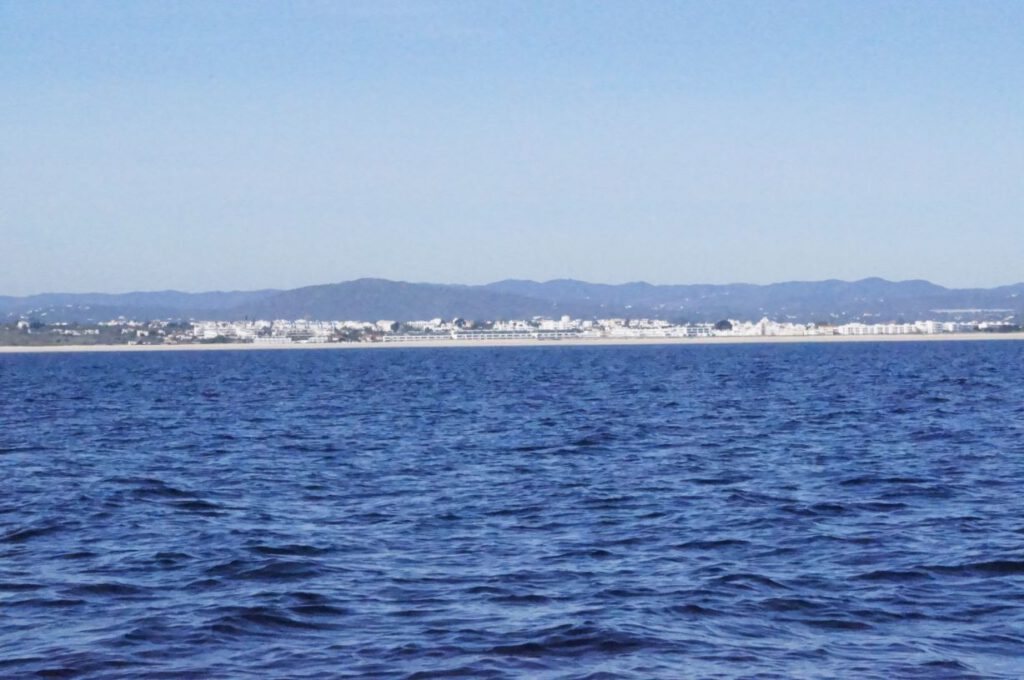
The view of Fuzeta from the sea. In the foreground, you can hardly make out the Ilha da Armona.
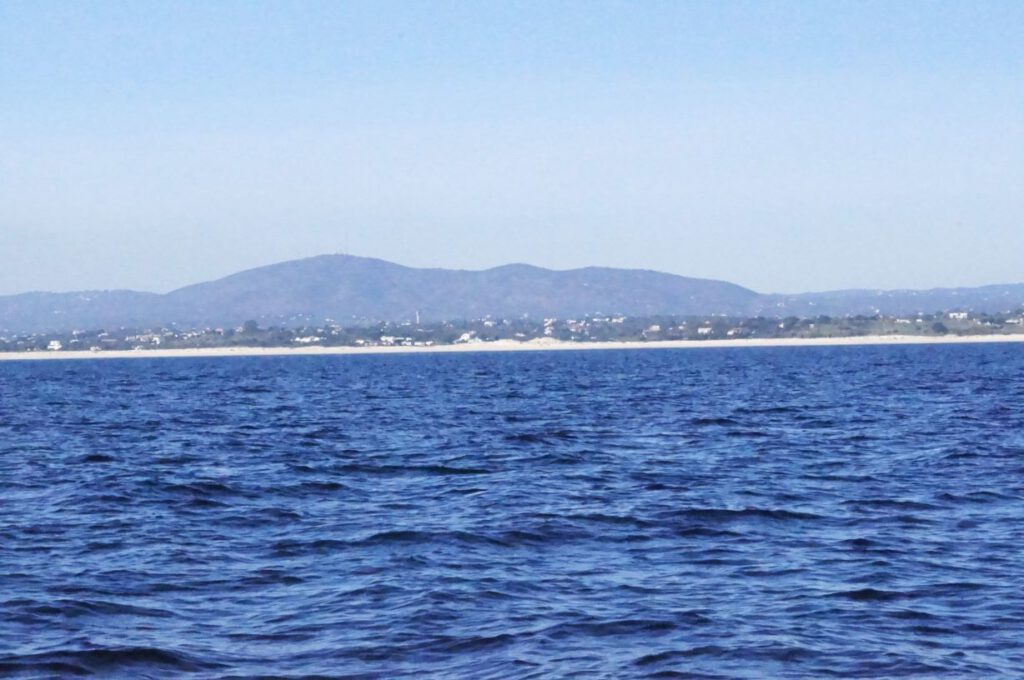
The view of the mountains from the sea.
Next: Andalucia
